Jonny Negron
La Vision Del Pan9 Rue des Cascades, Paris

The depiction of time, as it passes, as it wounds, as it changes the course of an existence, as it marks an era or else as it stretches out unendingly, has never been easy in art. Generally, too fleeting, the many attempts to represent it by painters like Claude Monet remain approximate and, today, only time-based media seem suited to accompanying artists in this quest. Yet, in the early 2020s, it was by using figurative painting that Jonny Negron gave form to what he calls “temporal sequences”. And his way of painting figures could not be clearer, more accessible and thus generous. Principally, this artist sets human figures in contemporary atmospheres, handling or holding everyday objects, cultivating a certain obsession with materialism. They obey an archetypal vision of humanity, which is seemingly simple and close to standard. There are also young, tall athletic men who all look alike, voluptuous women with large eyes and artfully, though rather excessively, painted nails. The generosity and precision of the lines, the simplicity of the contours and an ease of appreciation characterise his pictorial work. While not attempting to depict complex personalities or moods, he employs a figuration which is seemingly naive to convey cryptic messages, which transcend an initially simplistic impression.
They bring to mind the techniques used in manga, with an exaggeration of the size of the characters’ eyes so as to express extreme emotions. But, also, with some of the characteristics of naive painting, since, by not respecting the rules of dimensional perspective, by playing on a certain intensity in the colours – with highly attractive effects – and by exploiting extremely precise draughtmanship, Jonny Negron’s paintings adopt all of this genre’s orientations, whether we think of Douanier Rousseau or Archibald Motley. While his formal references may seem non-western, from Pre-Columbian to African art, via ancient depictions of Buddhas (the artist recognises that he has adopted the intense shape of their eyes for his characters), it is also through the relationship between formal and coded languages, pertaining to the painting of the European Renaissance, that this artist’s figuration needs to be apprehended and approached.
Though he was born and raised in a Christian Porto Rican family, then educated on the east coast of the USA, his art cannot be said to feed on unambiguous or strictly autobiographical references. Instead, it speaks a universal, multicultural language. By never reducing the world to a fragmentation of communities, this artist sees each human reality as being interconnected, with a play on sinuous coincidences and associations across time and between civilisations. Behind an acknowledged naivety, Jonny Negron’s painting unveils itself through a precise, complex-free erudition, animated by numerous signs related to cultures, religions and beliefs of varied origins, in a space-time seemingly free of an alpha or omega.
After devoting himself to the psychological visual effects of nightlife, in La Vision del Pan Jonny Negron offers an observation of the effects of dawn, when the subconscious remains extremely active, during the passage between sleeping and waking. While slipping into this temporal frame, the artist takes an interest in the various meanings of the word “Pan”, which becomes the guiding light of his show. As a prefix, pan- means “all”, all-embracing. It is also the name of the Greek demigod of nature and carnal pleasures. “Pan” means “bread” in Spanish, related to the French word “pain” and bringing to mind the English term “pain”. These meanings then allow him to construct conceptual connexions that guide the symbolism of his paintings, between the flesh (bread suggesting the body of Christ for Christians) and the endless sufferings of human beings in both their conflictual and social relations. The large formats can be decoded thanks to religious, cabalistic or zodiacal signs, while the smaller canvases provide clues to this decoding. As an illustration of the artist’s semio-pictorial approach, Draft Day depicts a man sacrificing himself on an upright pentagram, signifying the domination of the mind over matter, or positive Humanity. In a triangulation, vignettes evoke the hostage-taking drama in the airport of Lod (Israel) in 1972, when members of the Popular Front for the Liberation of Palestine (who came from Japan) murdered some of the passengers, including the artist’s grandmother: with the blooded Air France plane, a Porto-Rican loaf of bread and the violin case that contained the terrorists’ weapons. There is also a vignette depicting the Lion of Juda, symbolising a sovereignty that no nation state should be able to impose on another.
As in hieroglyphs, Jonny Negron’s paintings illustrate how social life is moulded by beliefs and symbols that regularly create violence and intolerance. The leitmotivs at work in his pieces and the artificiality of his archetypal characters bear witness to the eternal rebeginning of such sufferings, despite the lessons of history. And yet, his paintings also come across as spiritual quests with the desire that each failure, each deviance or human error can be seen as a fresh lesson in life, with a lifetime existing only to learn, again and again.
La représentation du temps, celui qui passe, celui qui blesse, celui qui change le cours d’une vie, celui qui marque une époque ou celui qui s’allonge à n’en plus finir n’a jamais été une chose aisée en art. Généralement trop fugace, les nombreuses tentatives de peintres comme Claude Monet pour le représenter restent approximatives, et aujourd’hui, seuls les time-based media paraissent les plus à même d’accompagner les artistes dans cette quête. À l’approche des années 2020, c’est pourtant par le biais de la peinture figurative que Jonny Negron donne forme à ce qu’il appelle des « séquences temporelles ». Et sa façon de peindre les figures ne pourrait être plus lisible, accessible et donc généreuse. L’artiste campe principalement des figures humaines dans des ambiances contemporaines, manipulant ou portant des objets de tous les jours, cultivant une certaine obsession pour le matérialisme. Elles obéissent à une vision archétypale de l’espèce humaine, en apparence simple et quasi standard. On y trouve ainsi des hommes jeunes, grands et athlétiques qui se ressemblent tous, des femmes plantureuses aux grands yeux et ongles savamment, quoiqu’un peu trop, fardés. La générosité et la précision du trait, la simplicité des contours et la facilité de lecture caractérisent son œuvre pictural. Ne cherchant pas à figurer des personnalités complexes ou des états d’âme, il use d’une figuration a priori naïve pour y faire circuler des messages cryptés, dépassant la facilité de lecture préalable.
On pense effectivement aux techniques des mangas exagérant la taille des yeux des personnages afin de véhiculer des émotions extrêmes. Mais aussi aux caractéristiques de la peinture naïve, puisqu’en ne respectant pas les règles de la perspective sur les dimensions, en jouant avec une certaine intensité des couleurs - aux effets très séduisants -, et en pratiquant un dessin d’une grande précision, la peinture de Jonny Negron adopte toutes les orientations de ce genre, que l’on pense au Douanier Rousseau ou à Archibald Motley. Si ses références formelles paraissent par conséquent extra-occidentales, de l’art précolombien à l’art africain en passant par les représentations antiques de Bouddhas (dont l’artiste reconnaît avoir emprunté la forme des yeux si intenses de ses personnages), c’est aussi dans les relations entre langage formel et langage codé propre à la peinture de la Renaissance européenne qu’il faut comprendre et aborder la figuration de l’artiste.
Né et élevé dans une famille portoricaine chrétienne, bien qu’éduqué sur la côte est des États-Unis, son art ne saurait se nourrir de références univoques et strictement autobiographiques, et présente un langage universel et multiculturaliste. Ne réduisant jamais le monde à une fragmentation de communautés, l’artiste considère chaque réalité humaine comme s’interconnectant, jouant de rapport de coïncidences et d’associations sinueuses à travers le temps et les civilisations. Derrière une naïveté revendiquée, la peinture de Jonny Negron se dévoile par le biais d’une érudition précise et décomplexée, dans laquelle s’animent de multiples signes se rapportant à des cultures, des religions et des croyances de différentes origines, dans un espace-temps semblant dénué d’alpha et d’oméga.
Après s’être consacré aux effets visuels et psychologiques de la vie nocturne, Jonny Negron propose dans La Vision del Pan d’observer les effets de l’aube, lorsque le subconscient demeure encore très actif, au passage du sommeil à l’éveil. Se glissant dans ce cadre temporel, l’artiste s’intéresse aux différentes significations que peut prendre le mot « Pan », devenant le fil rouge de son exposition. En tant que préfixe, pan- signifie le tout, ce qui englobe tout. C’est aussi, le demi-dieu grec de la nature et des plaisirs charnels. « Pan » signifie « pain » en espagnol, dont le mot français ramène à l’anglais « pain », douleur, souffrance. Ces acceptions lui permettent alors de construire une connexion conceptuelle guidant la symbolique de ses peintures, entre rapport charnel (le pain se rapporte au corps du Christ chez les chrétiens) et souffrances perpétuelles des êtres humains dans leurs relations conflictuelles et sociales. Les grands formats se décodent grâce à des signes religieux, cabalistiques ou zodiacaux, et les petites peintures fonctionnent comme des indices pour leur décodage. Illustrant bien la démarche sémio-picturale de l’artiste, Draft Day représente un homme en train de s’immoler sur fond de pentagramme droit, signifiant la domination de l’esprit sur la matière, l’Homme positif. Dans une triangulation, des vignettes évoquent le drame de la prise d’otage de l’aéroport de Lod (Israël) en 1972, lorsque des membres du Front populaire de libération de la Palestine (d’origines japonaises) massacrèrent un certain nombre de passagers, dont la grand-mère de l’artiste: l’avion Air France ensanglanté, la baguette de pain portoricaine et la mallette de violon contenant les armes des terroristes. S’y ajoute une vignette représentant le lion de Juda, symbolisant une souveraineté qu’aucun État-nation ne pourrait imposer à un autre.
À la manière des hiéroglyphes, les peintures de Jonny Negron illustrent la vie en société pétries de croyances et de symbolique générant régulièrement violence et intolérance. Le leitmotiv à l’œuvre dans son travail et l’artificialité de ses personnages archétypaux témoignent de l’éternel recommencement de ces souffrances, malgré les leçons de l’histoire. Pour autant, ses peintures s’offrent au regard telles des quêtes spirituelles voulant que chaque échec, chaque déviance ou erreur humaine se conçoive comme une leçon de vie supplémentaire, le temps d’une vie n’advenant que pour apprendre, encore et toujours.
Benoît Lamy de La Chapelle, mai 2024


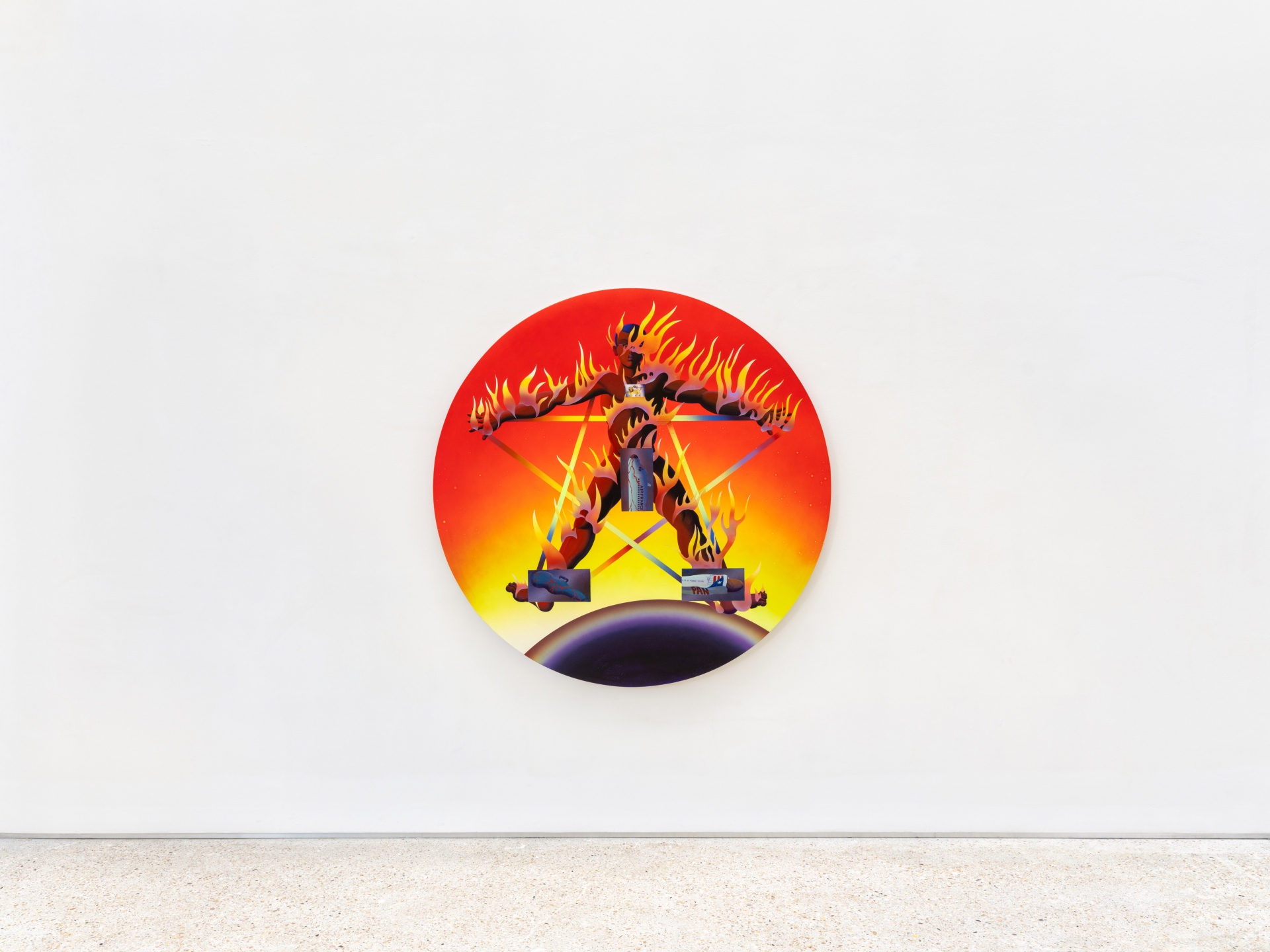
Jonny Negron, Draft Day, 2024, Acrylic on linen, 152.4 × 152.4 cm. Courtesy of the artist, Château Shatto and Crèvecœur, Paris.
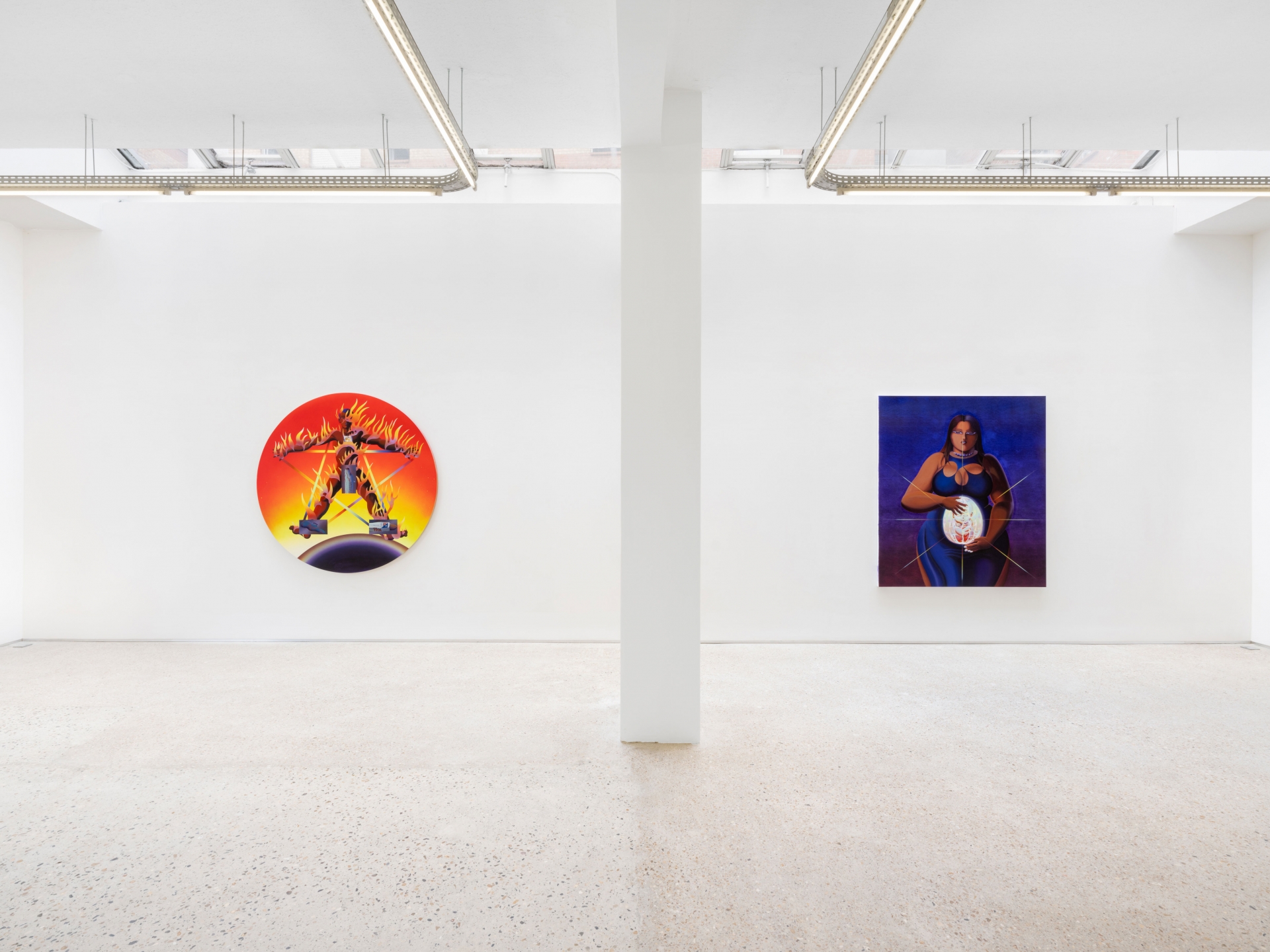
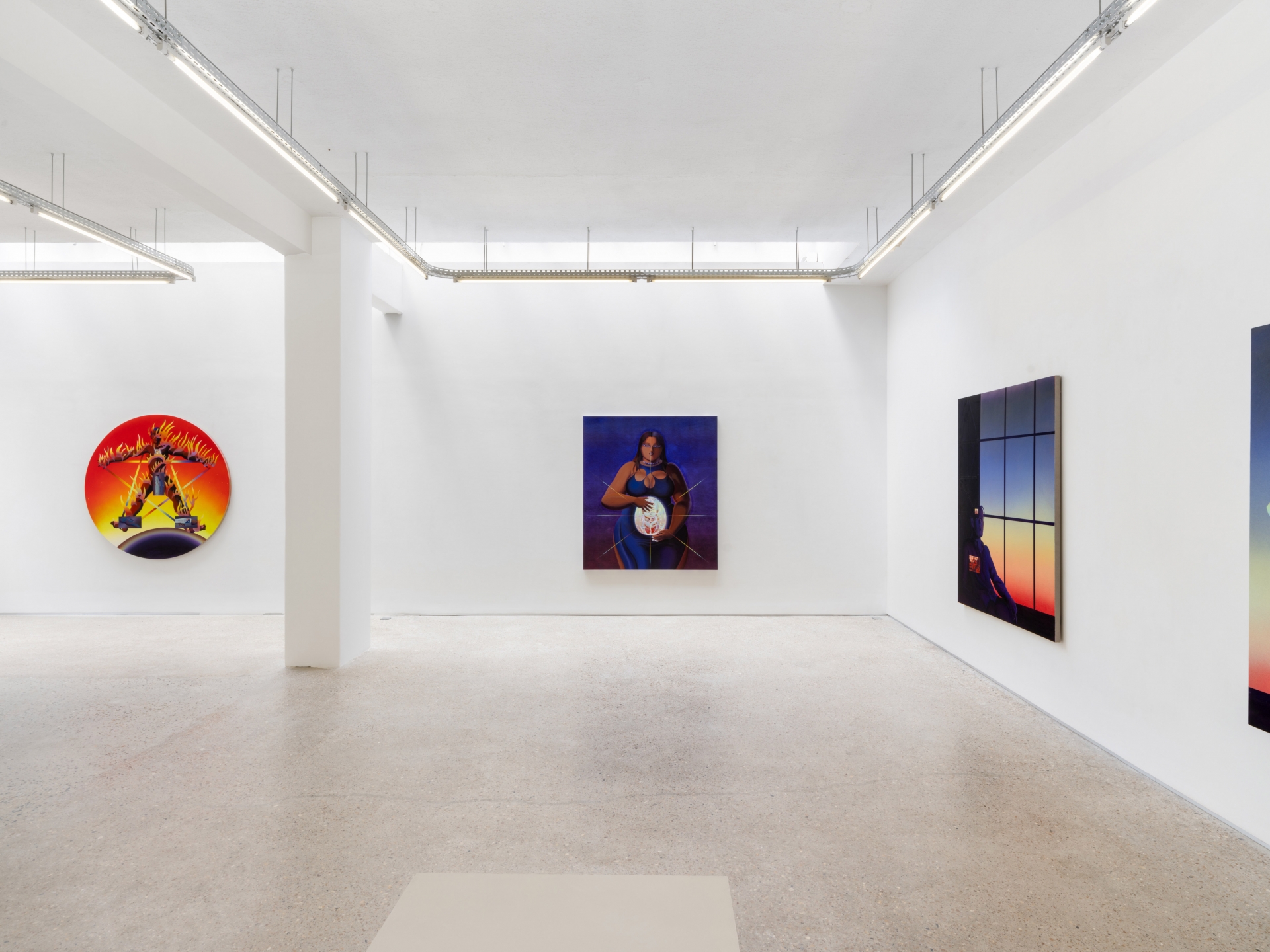
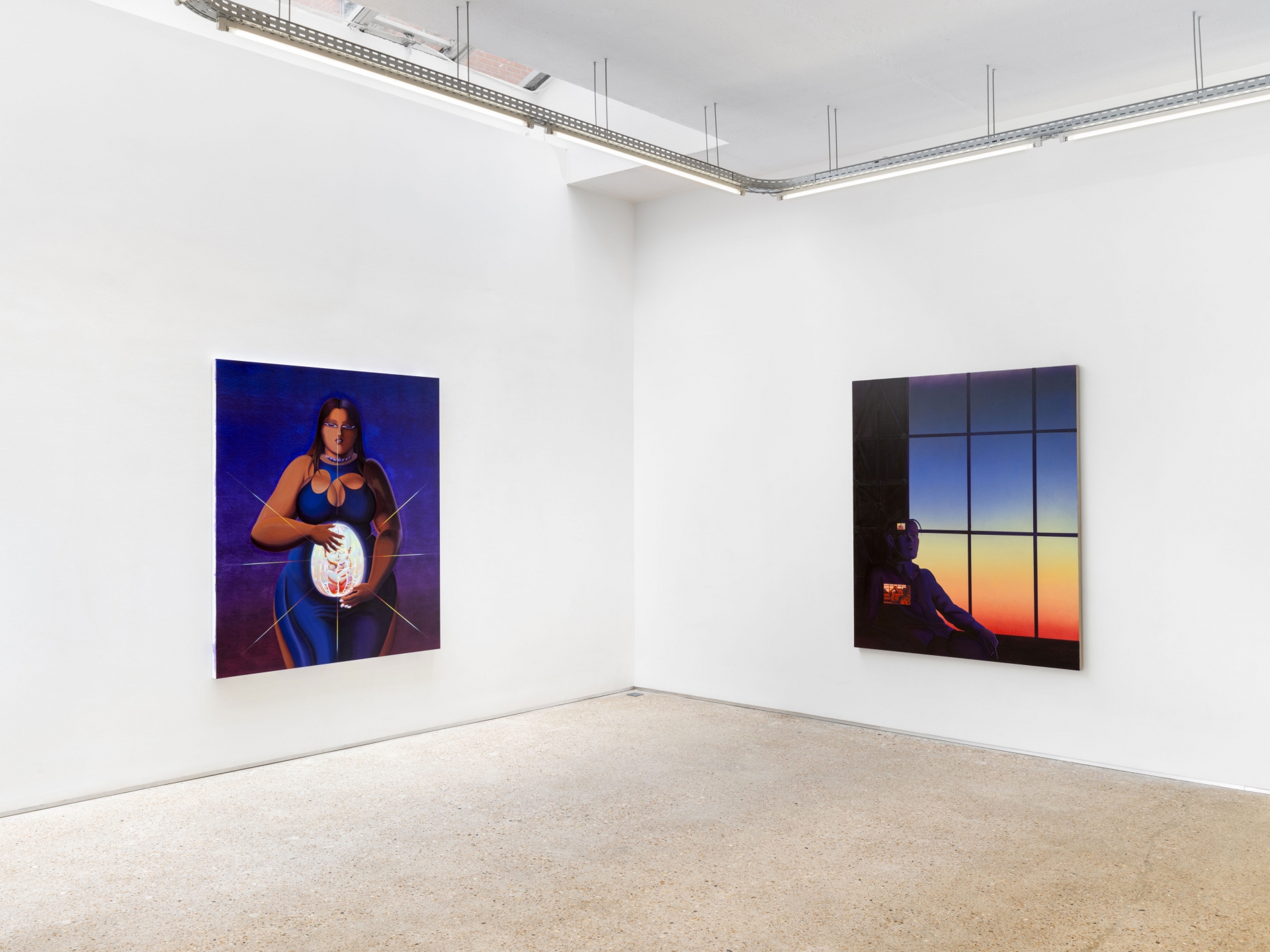

Jonny Negron, Mother and Child, 2024, Acrylic on linen, 162.6 × 142.2 cm. Courtesy of the artist, Château Shatto and Crèvecœur, Paris.

Jonny Negron, Mother and Child, 2024, Acrylic on linen, 162.6 × 142.2 cm (detail).
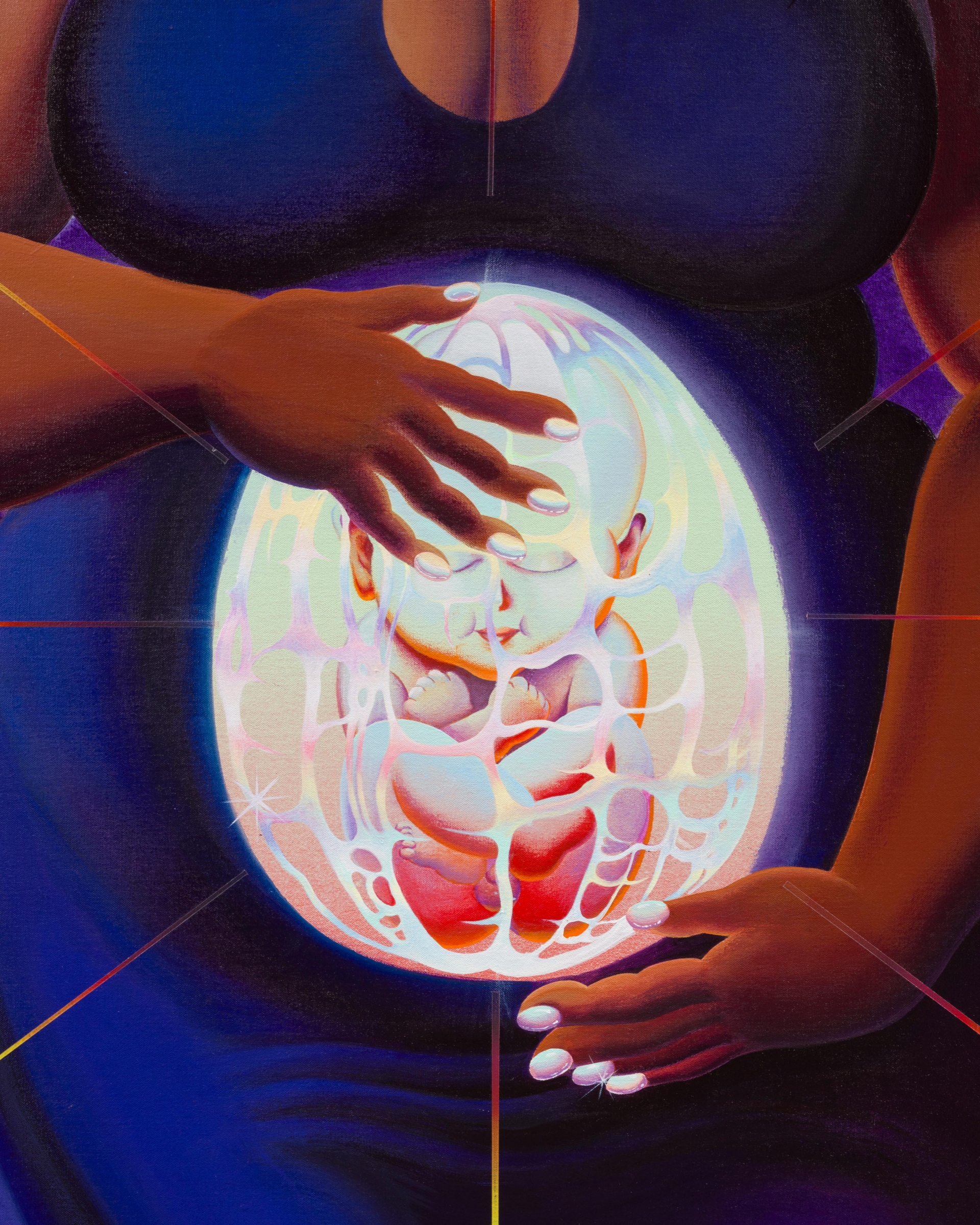
Jonny Negron, Mother and Child, 2024, Acrylic on linen, 162.6 × 142.2 cm (detail).
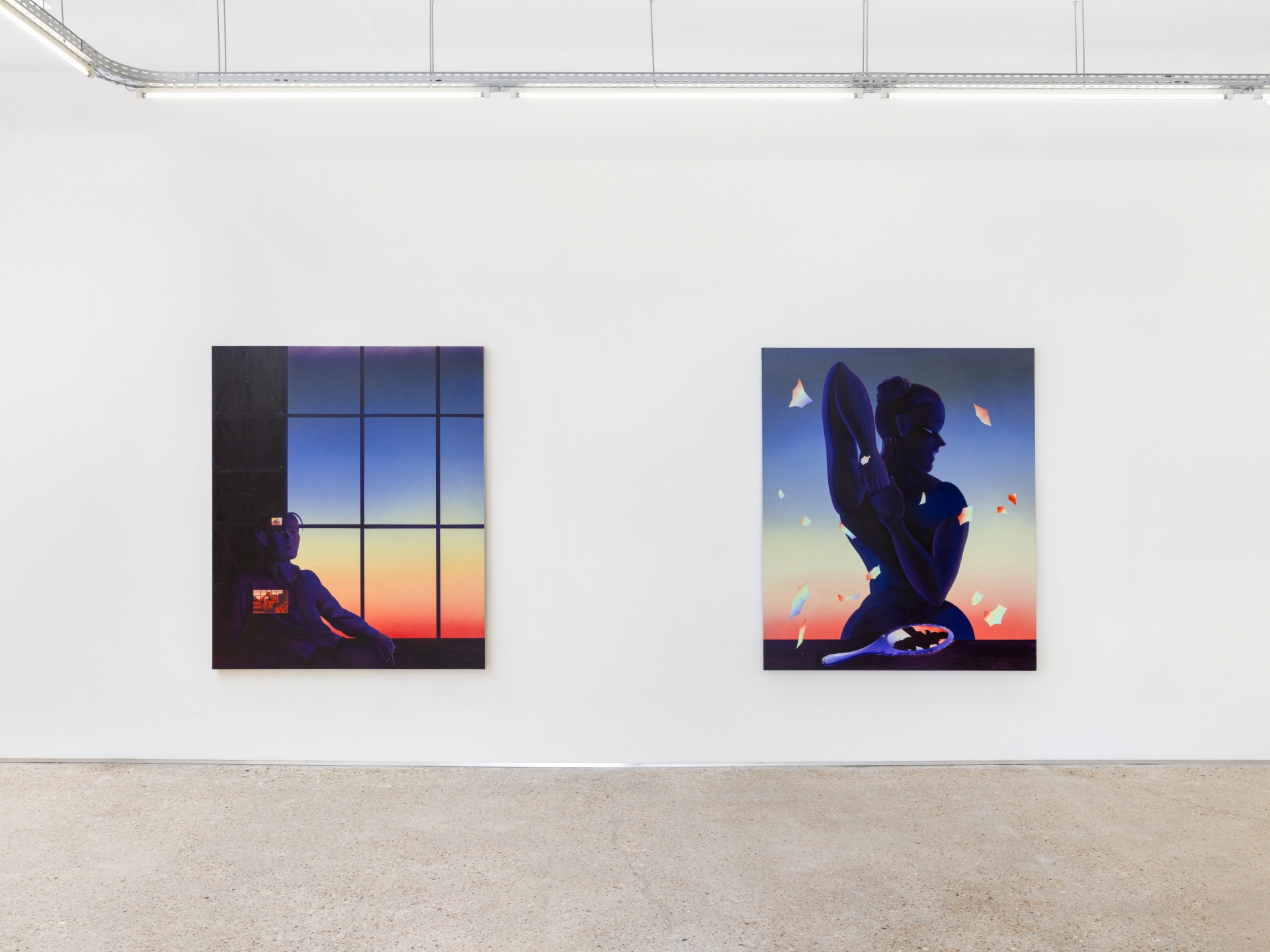
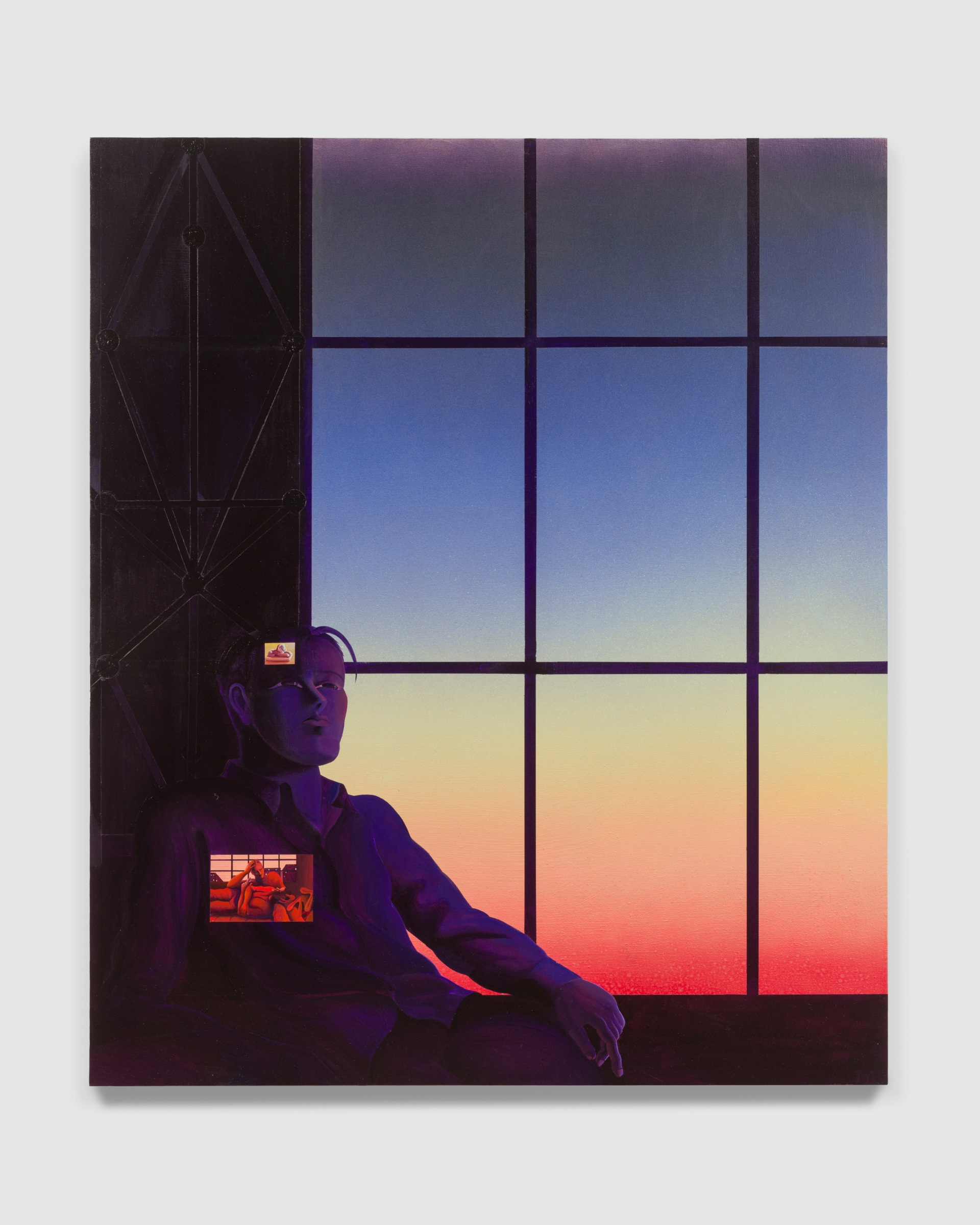
Jonny Negron, Ich Ruf Zu Dir, Herr Jesu Christ, 2024, Acrylic on linen, 162.6 × 142.2 cm. Courtesy of the artist, Château Shatto and Crèvecœur, Paris.
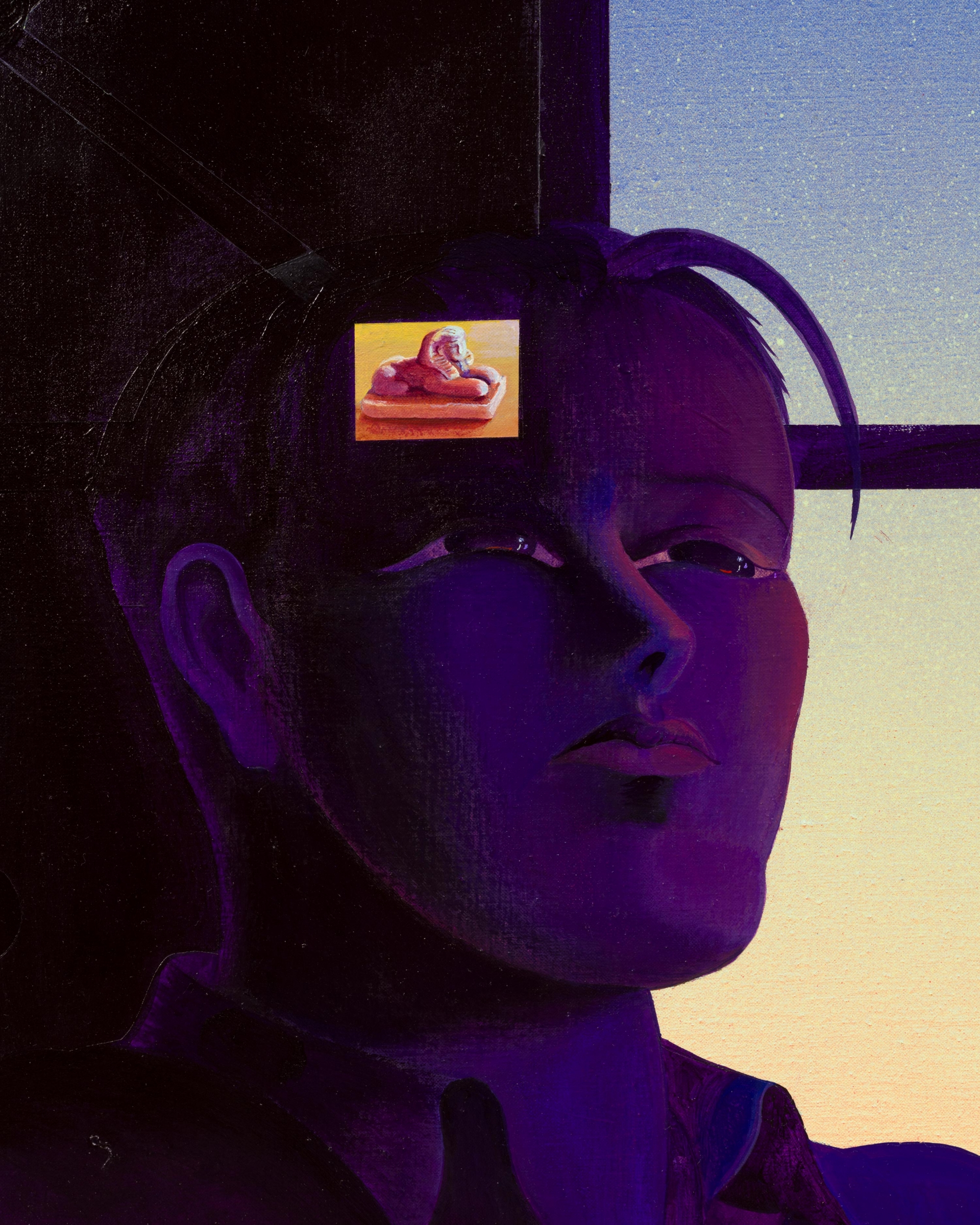
Jonny Negron, Ich Ruf Zu Dir, Herr Jesu Christ, 2024, Acrylic on linen, 162.6 × 142.2 cm (detail).
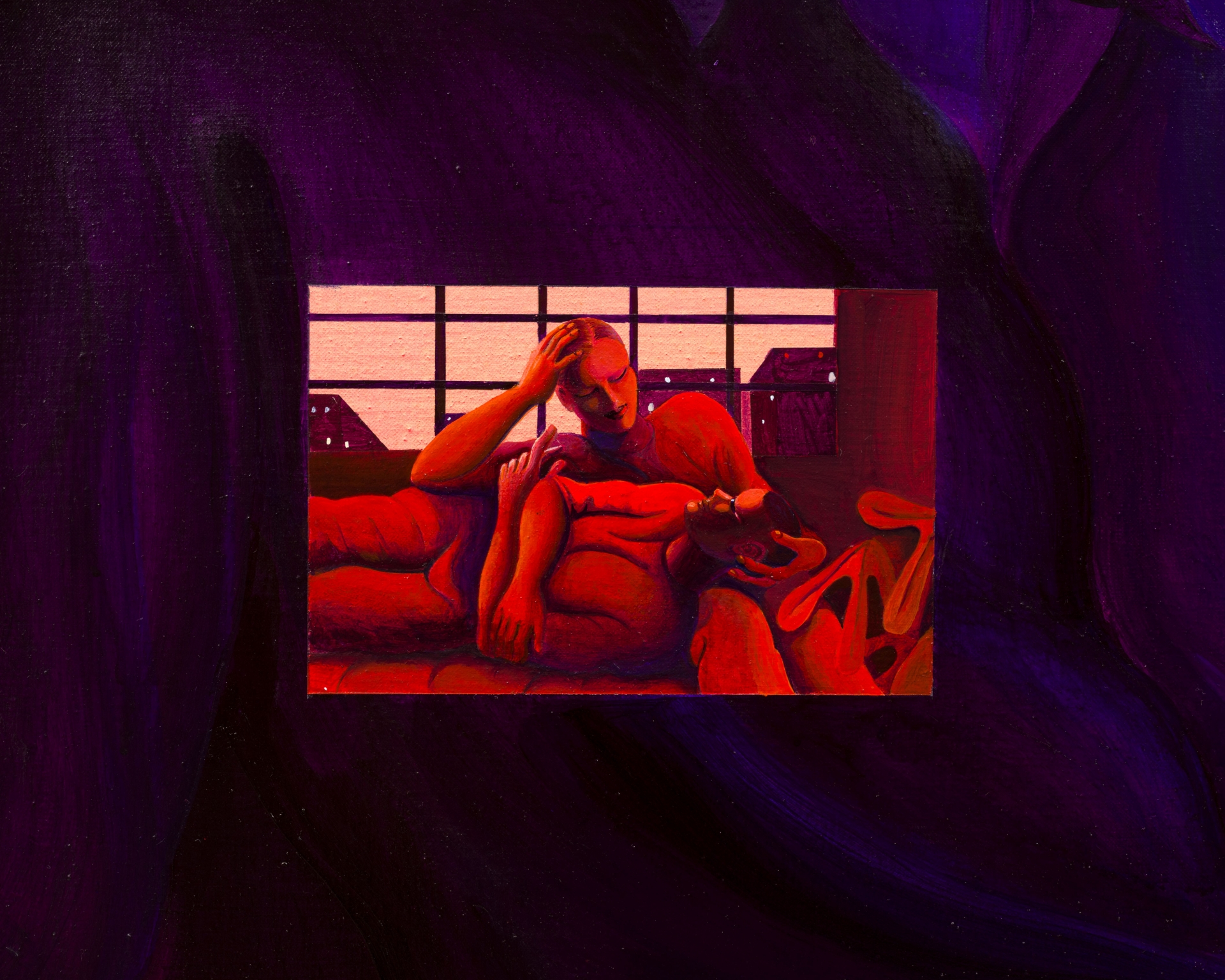
Jonny Negron, Ich Ruf Zu Dir, Herr Jesu Christ, 2024, Acrylic on linen, 162.6 × 142.2 cm (detail).
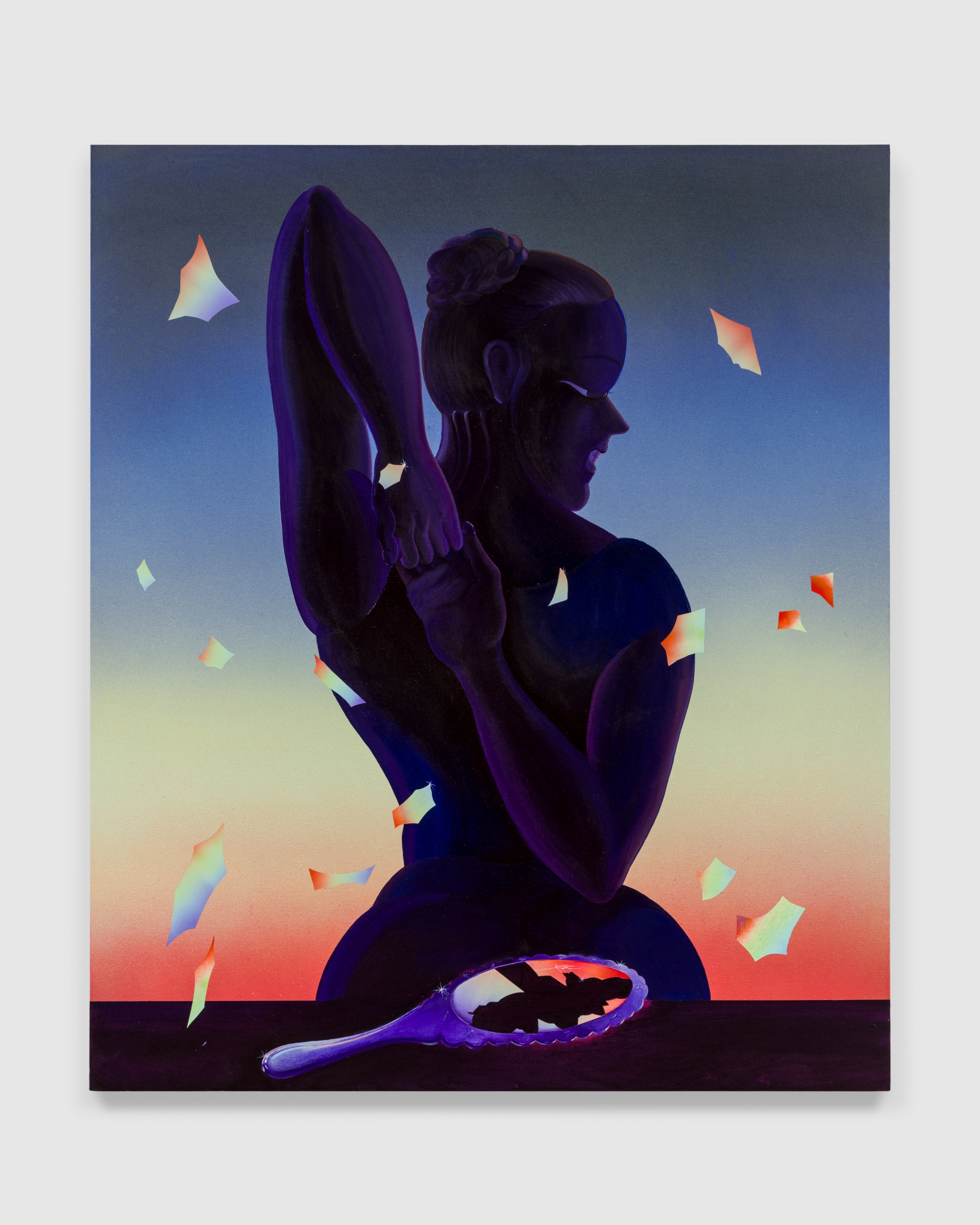
Jonny Negron, The Vision of Pain, 2024, Acrylic on linen, 162.6 × 142.2 cm. Courtesy of the artist, Château Shatto and Crèvecœur, Paris.
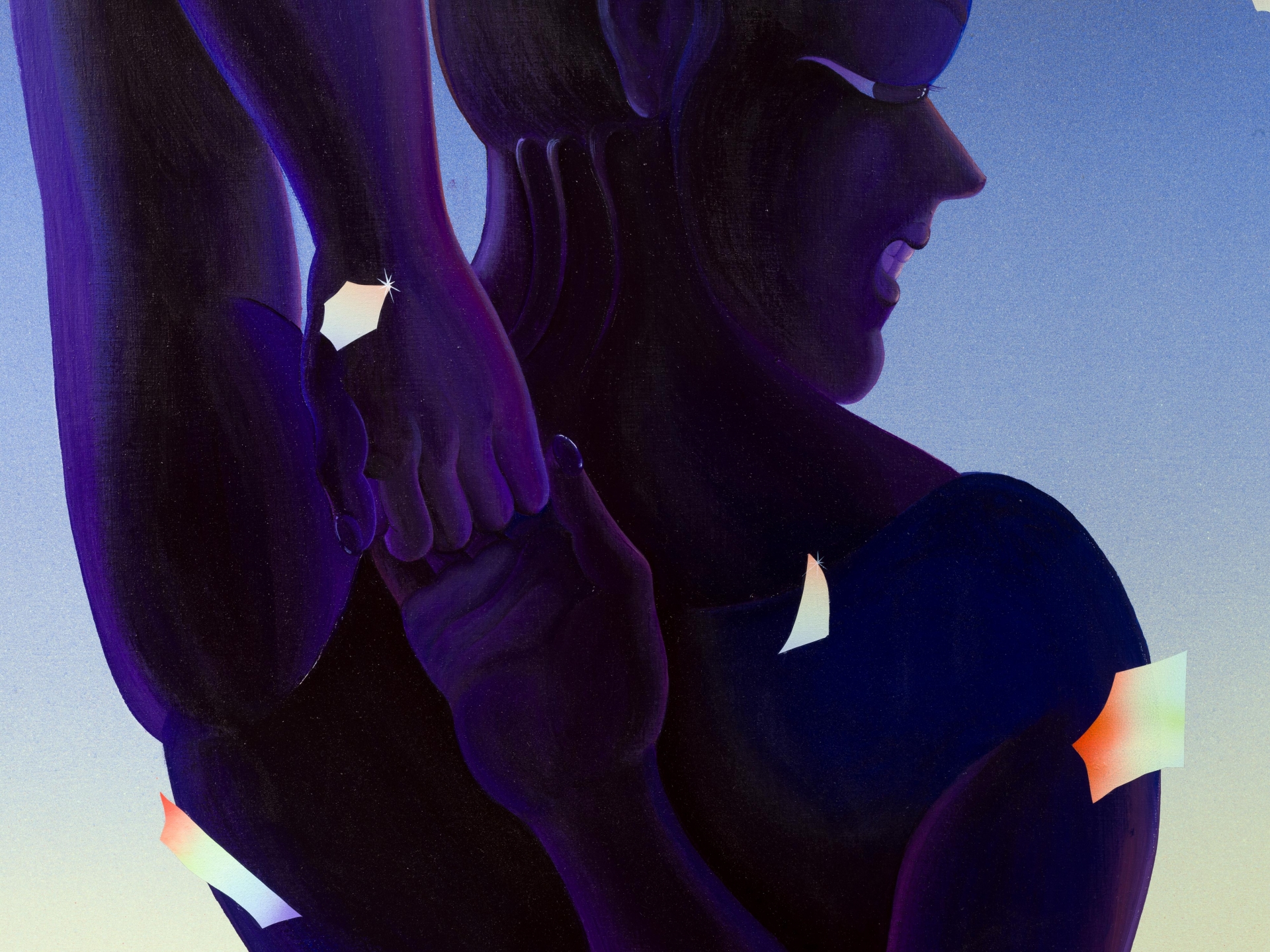
Jonny Negron, Ich Ruf Zu Dir, Herr Jesu Christ, 2024, Acrylic on linen, 162.6 × 142.2 cm (detail).
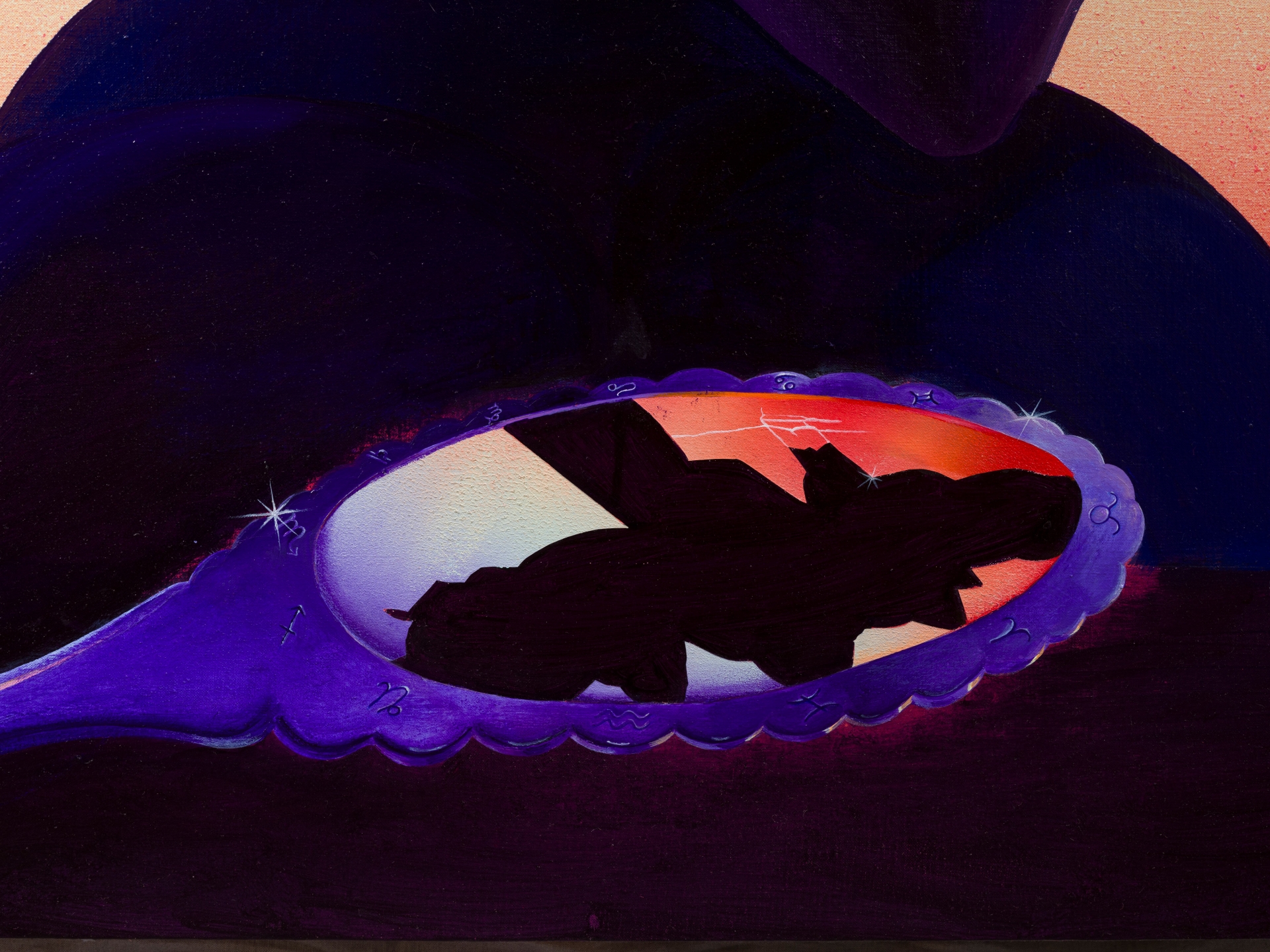
Jonny Negron, Ich Ruf Zu Dir, Herr Jesu Christ, 2024, Acrylic on linen, 162.6 × 142.2 cm (detail).
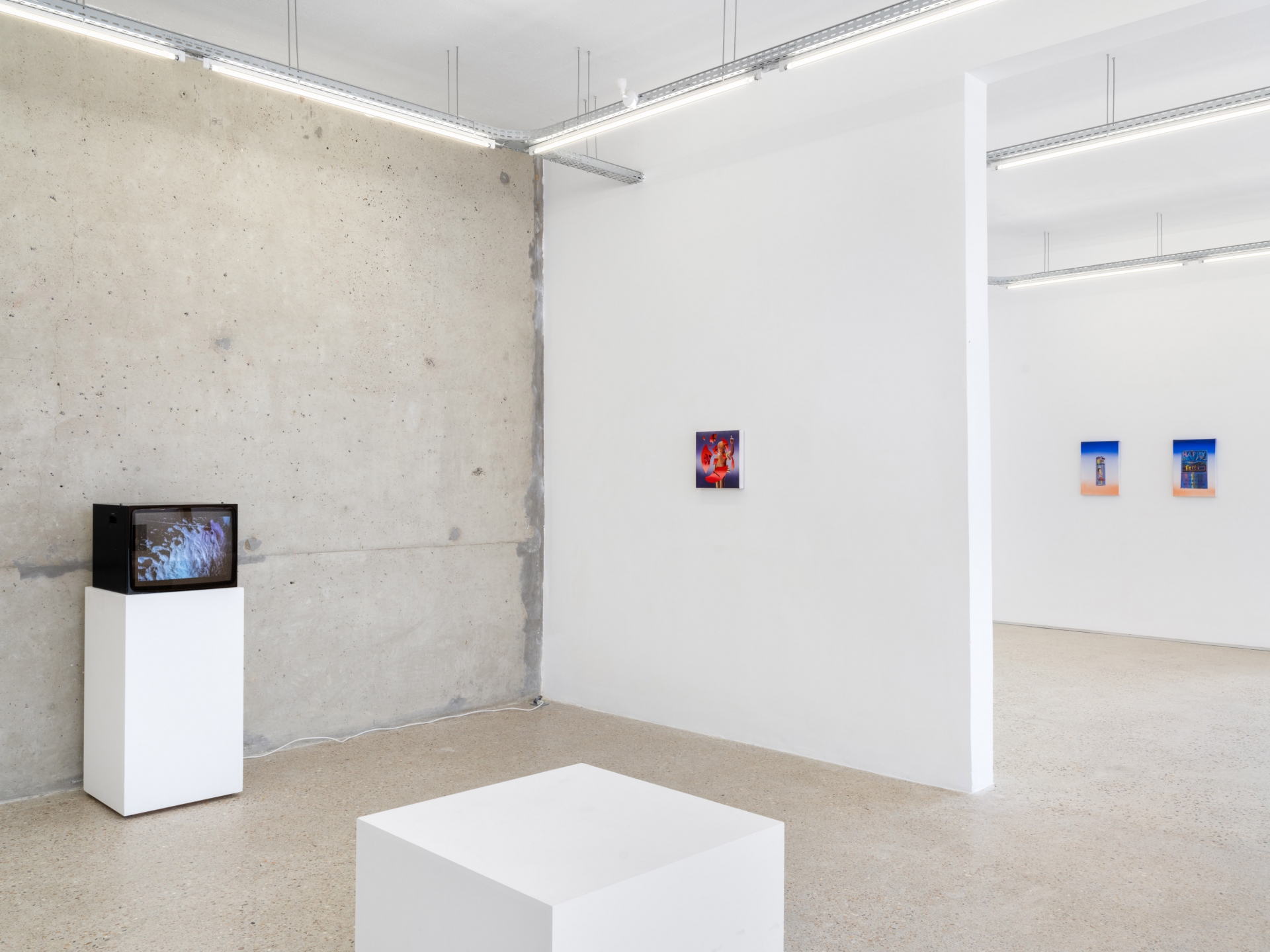
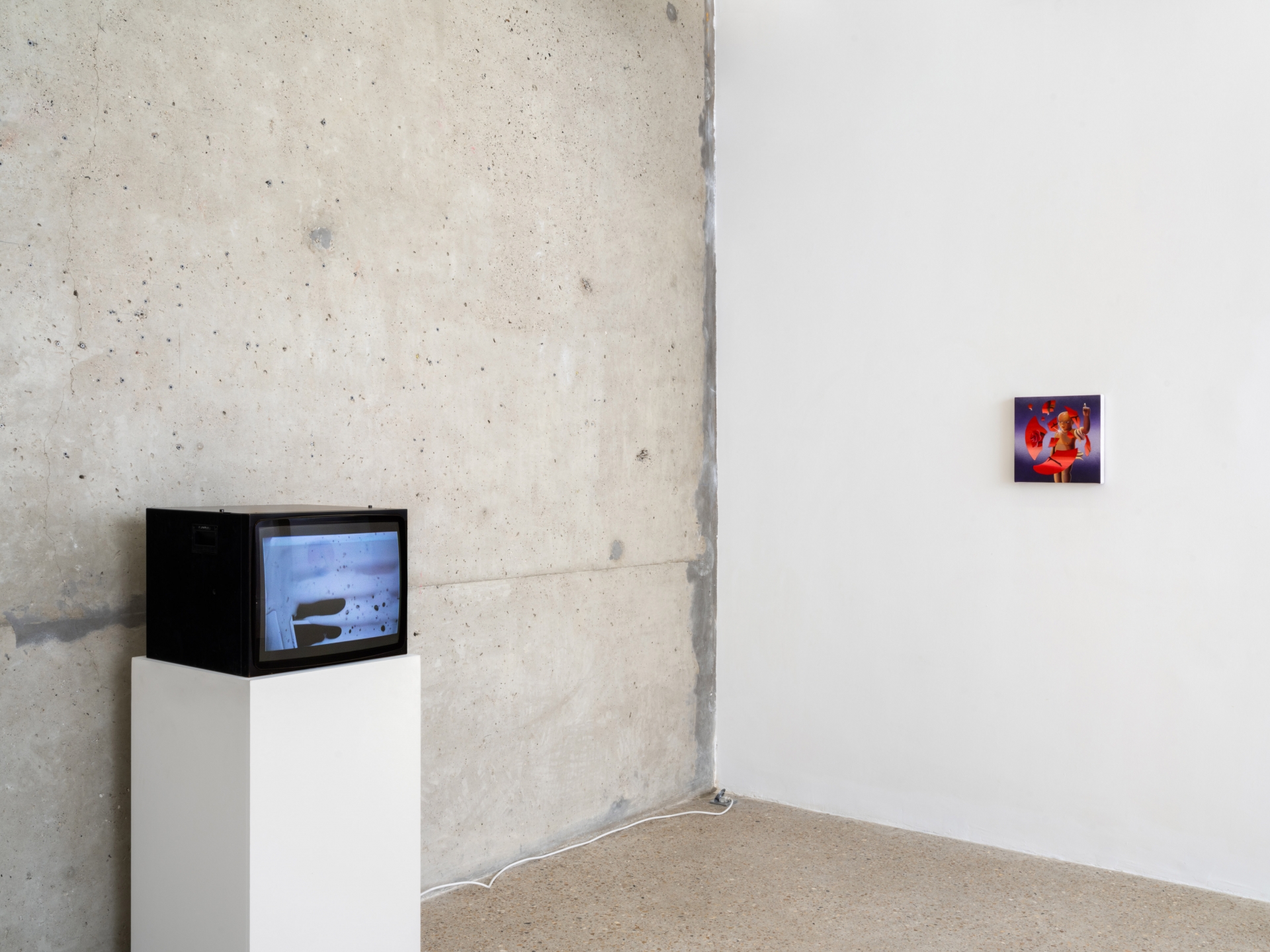
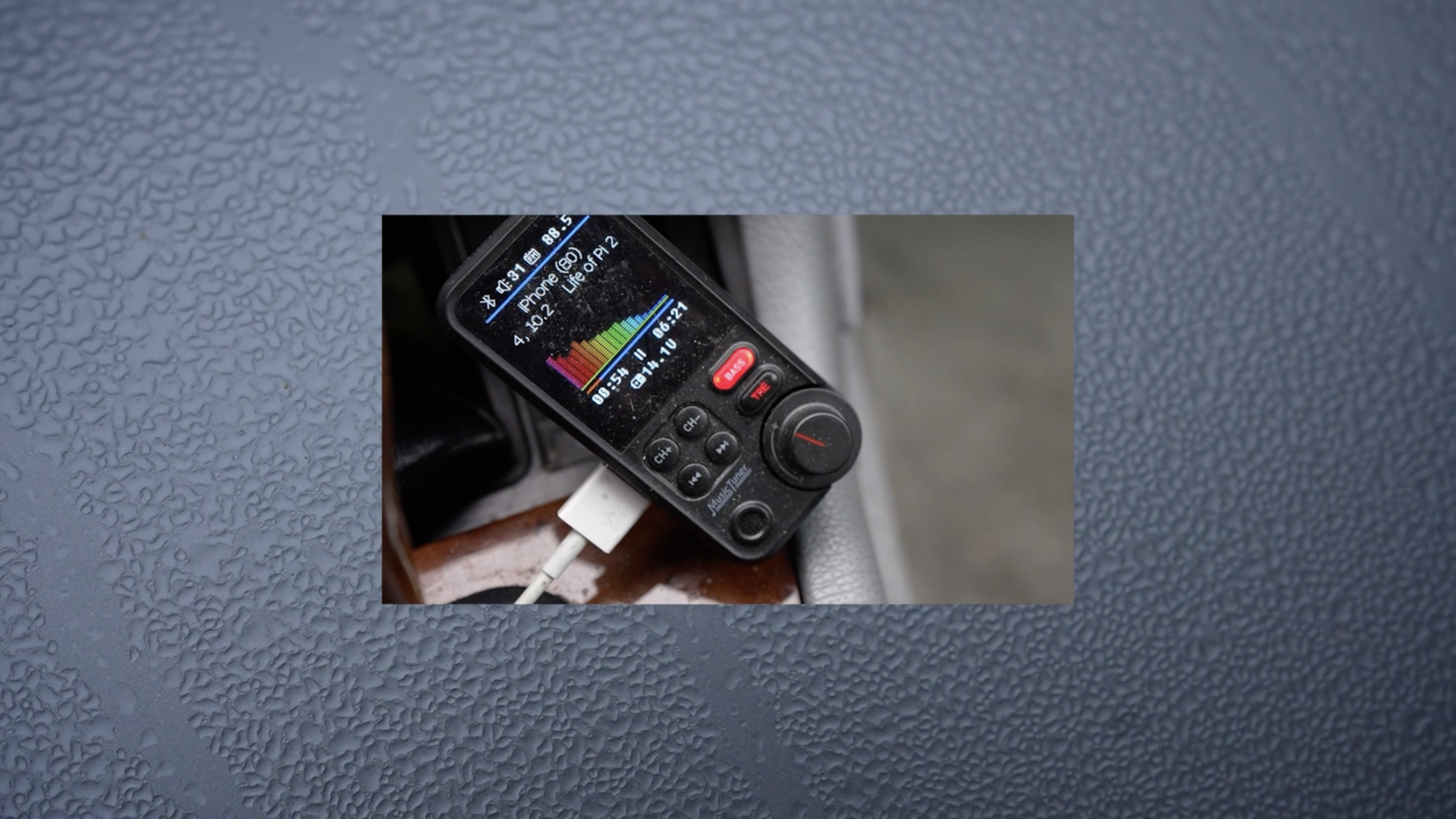
Jonny Negron, Vehiculum Streaming, 2024, Digital video, 22 min 1 sec (Video Still). Courtesy of the artist, Château Shatto and Crèvecœur, Paris.

Jonny Negron, Vehiculum Streaming, 2024, Digital video, 22 min 1 sec (Video Still). Courtesy of the artist, Château Shatto and Crèvecœur, Paris.
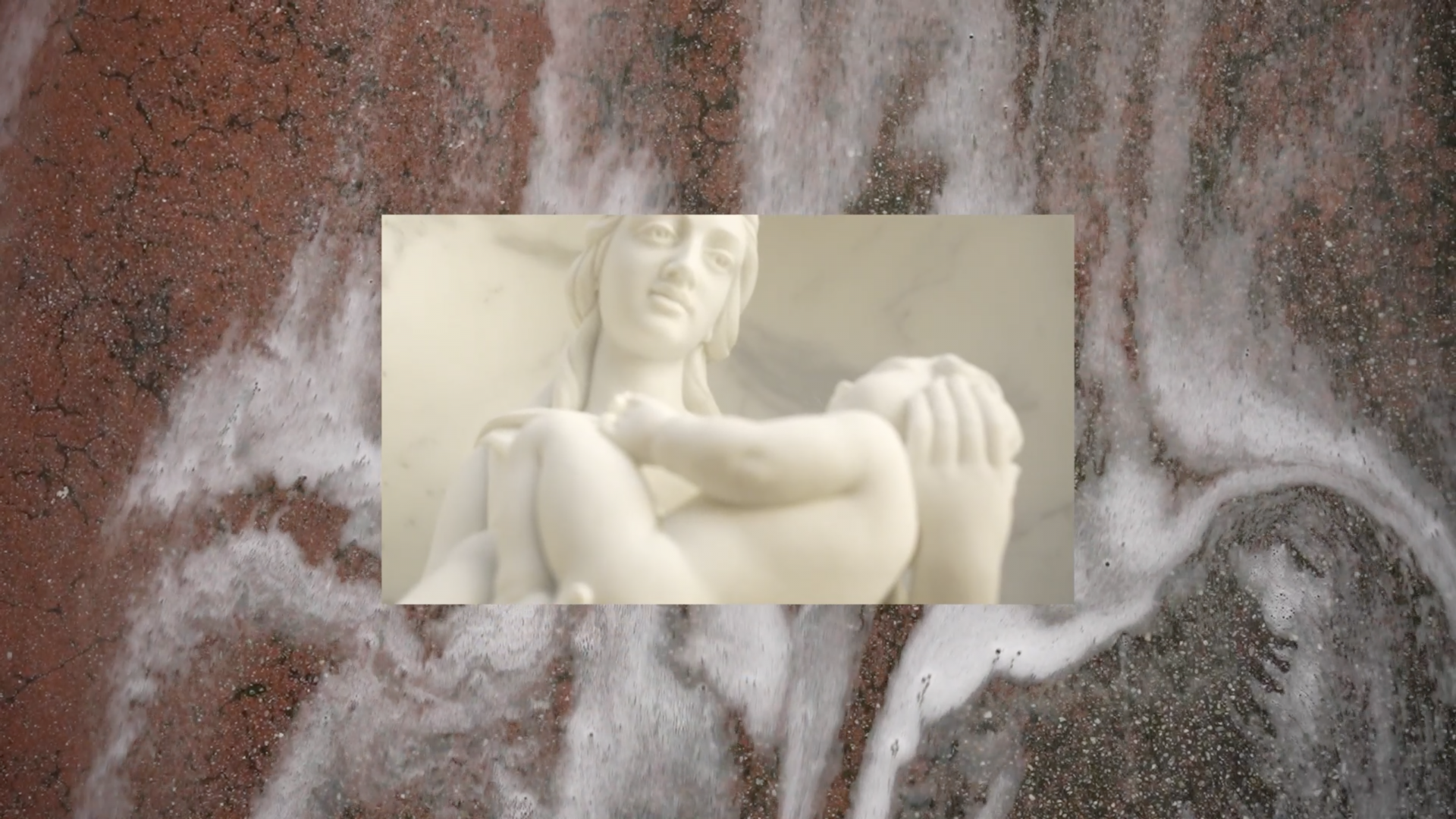
Jonny Negron, Vehiculum Streaming, 2024, Digital video, 22 min 1 sec (Video Still). Courtesy of the artist, Château Shatto and Crèvecœur, Paris.
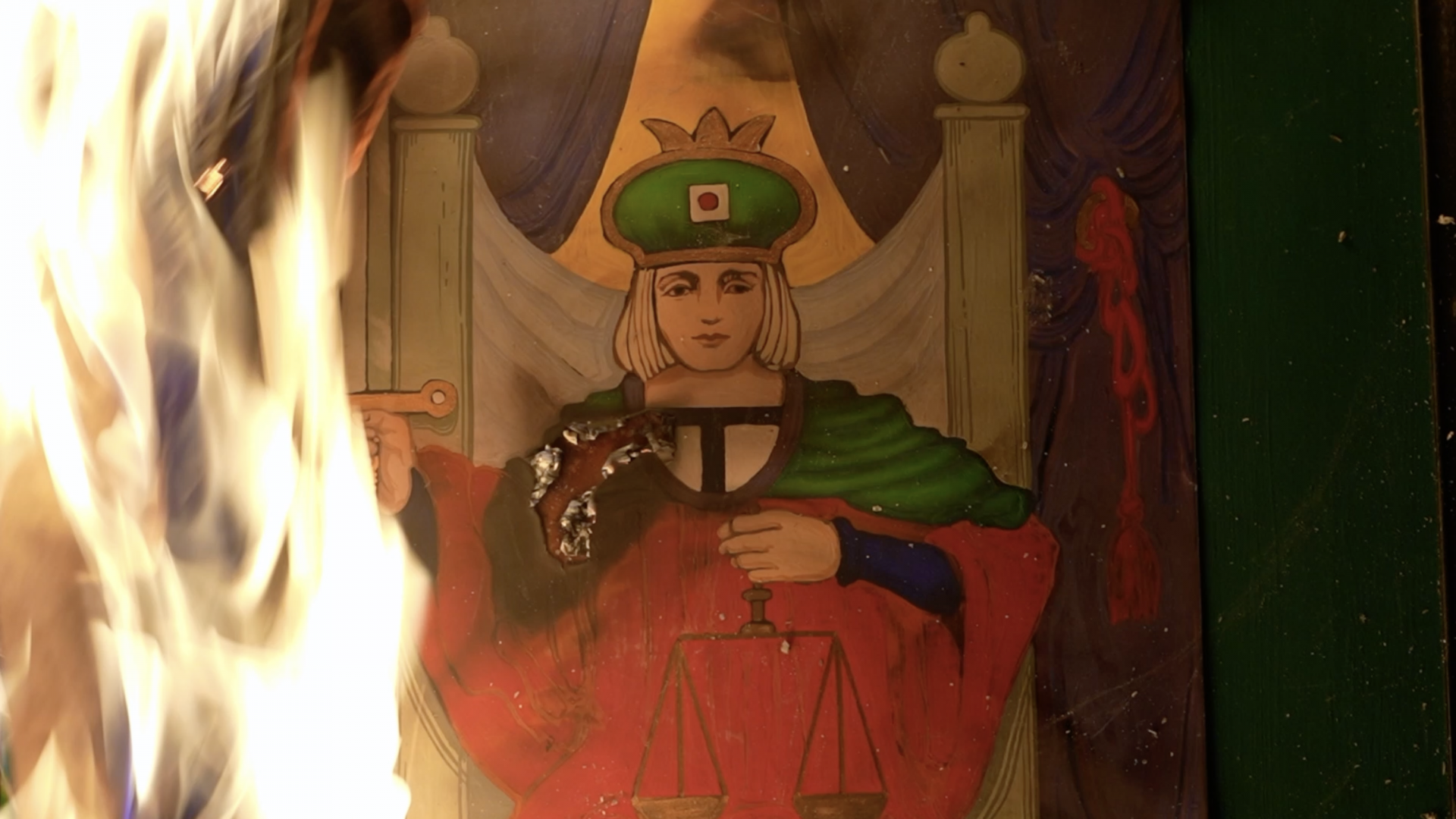
Jonny Negron, Vehiculum Streaming, 2024, Digital video, 22 min 1 sec (Video Still). Courtesy of the artist, Château Shatto and Crèvecœur, Paris.
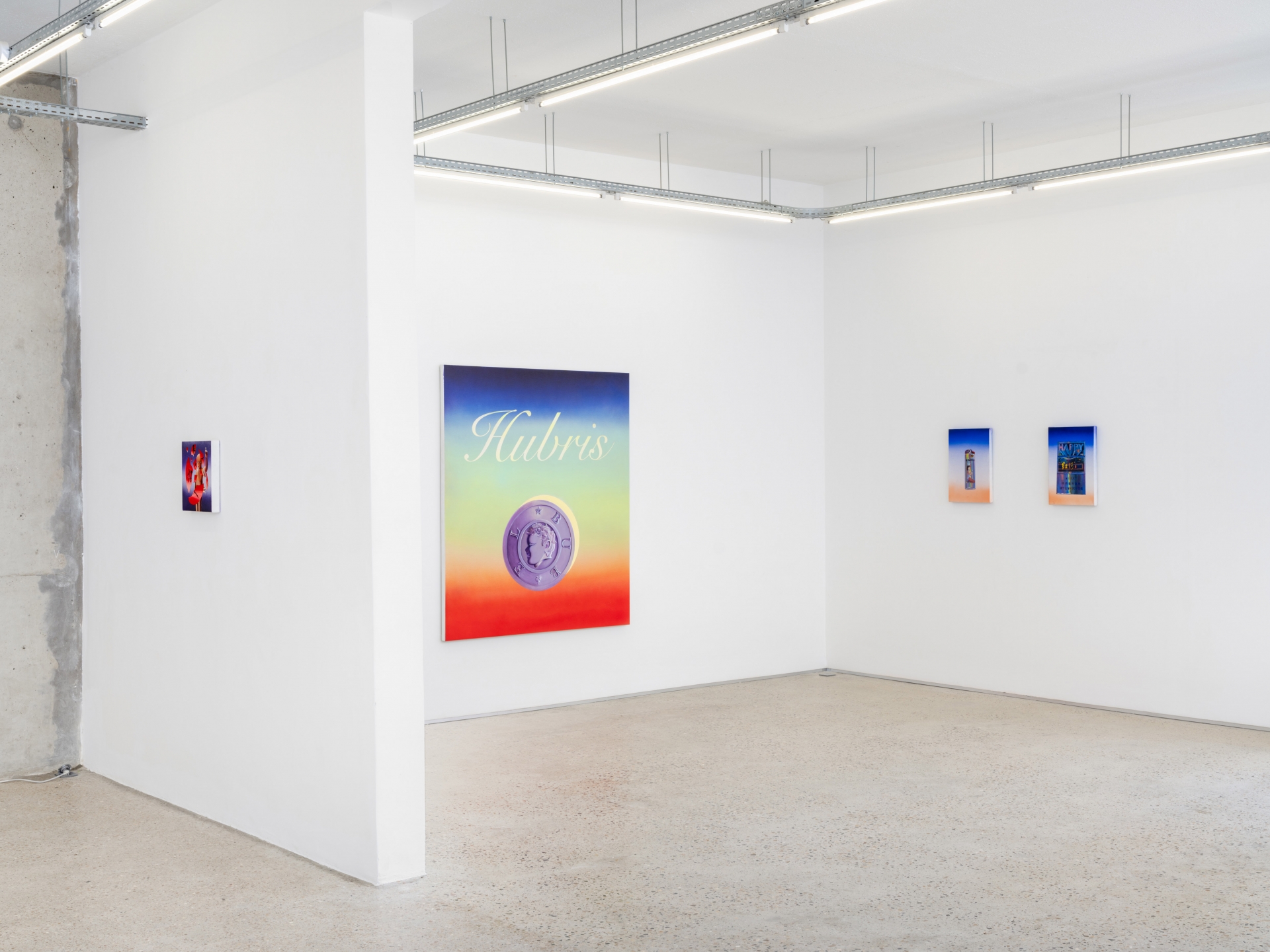
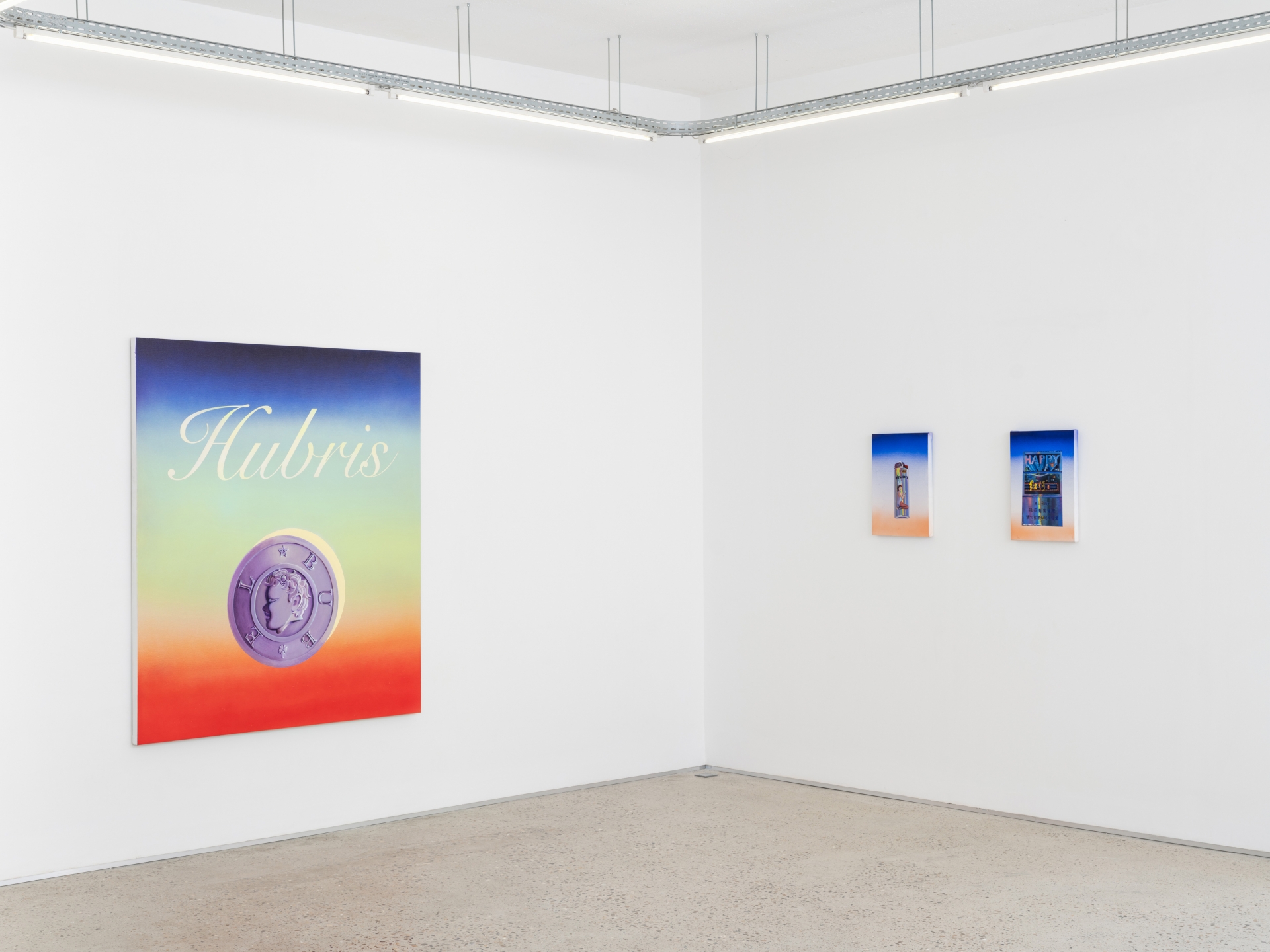
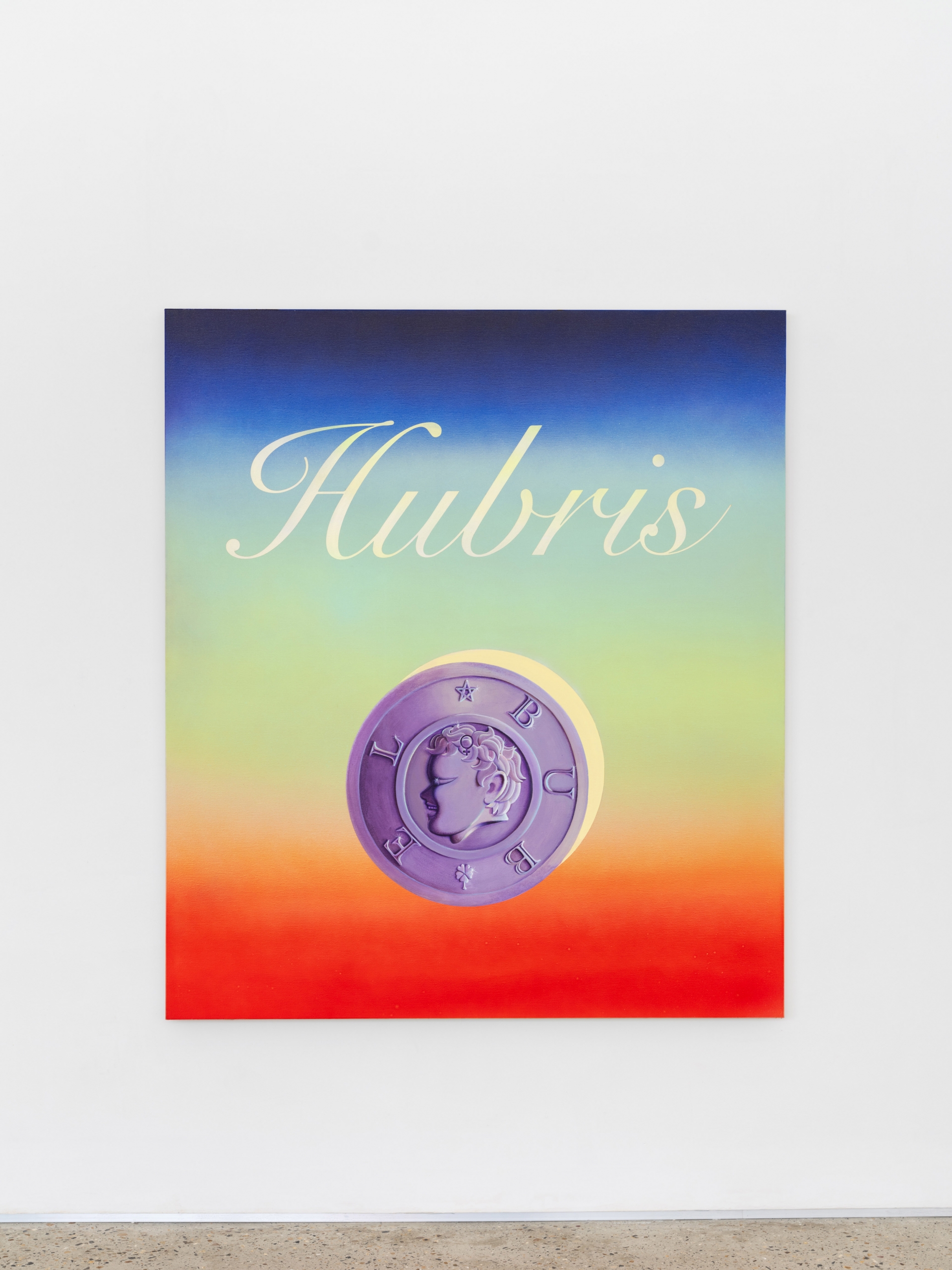
Jonny Negron, Por Ti Volare, 2024, Acrylic on linen, 162.6 × 142.2 cm. Courtesy of the artist, Château Shatto and Crèvecœur, Paris.
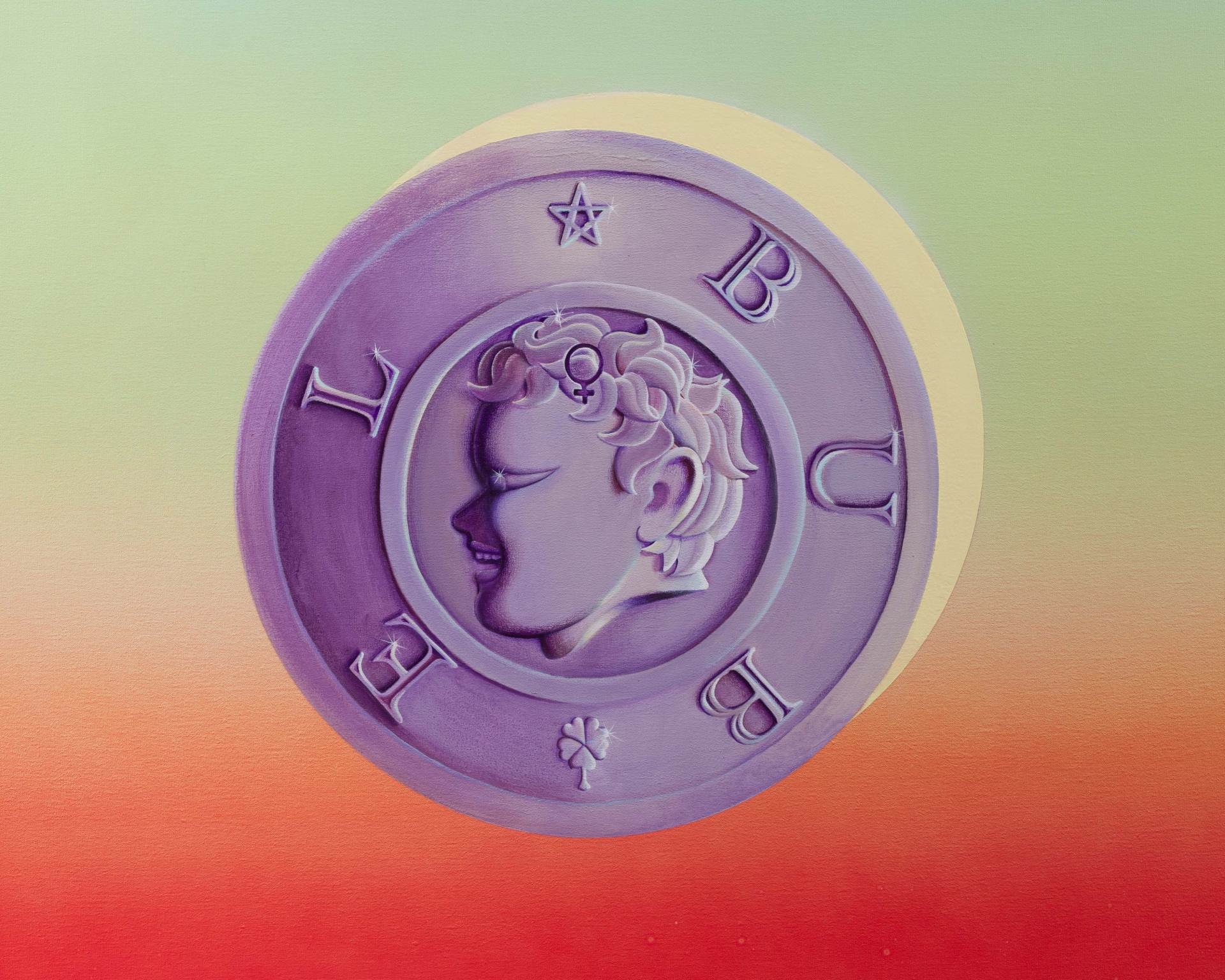
Jonny Negron, Por Ti Volare, 2024, Acrylic on linen, 162.6 × 142.2 cm (detail).
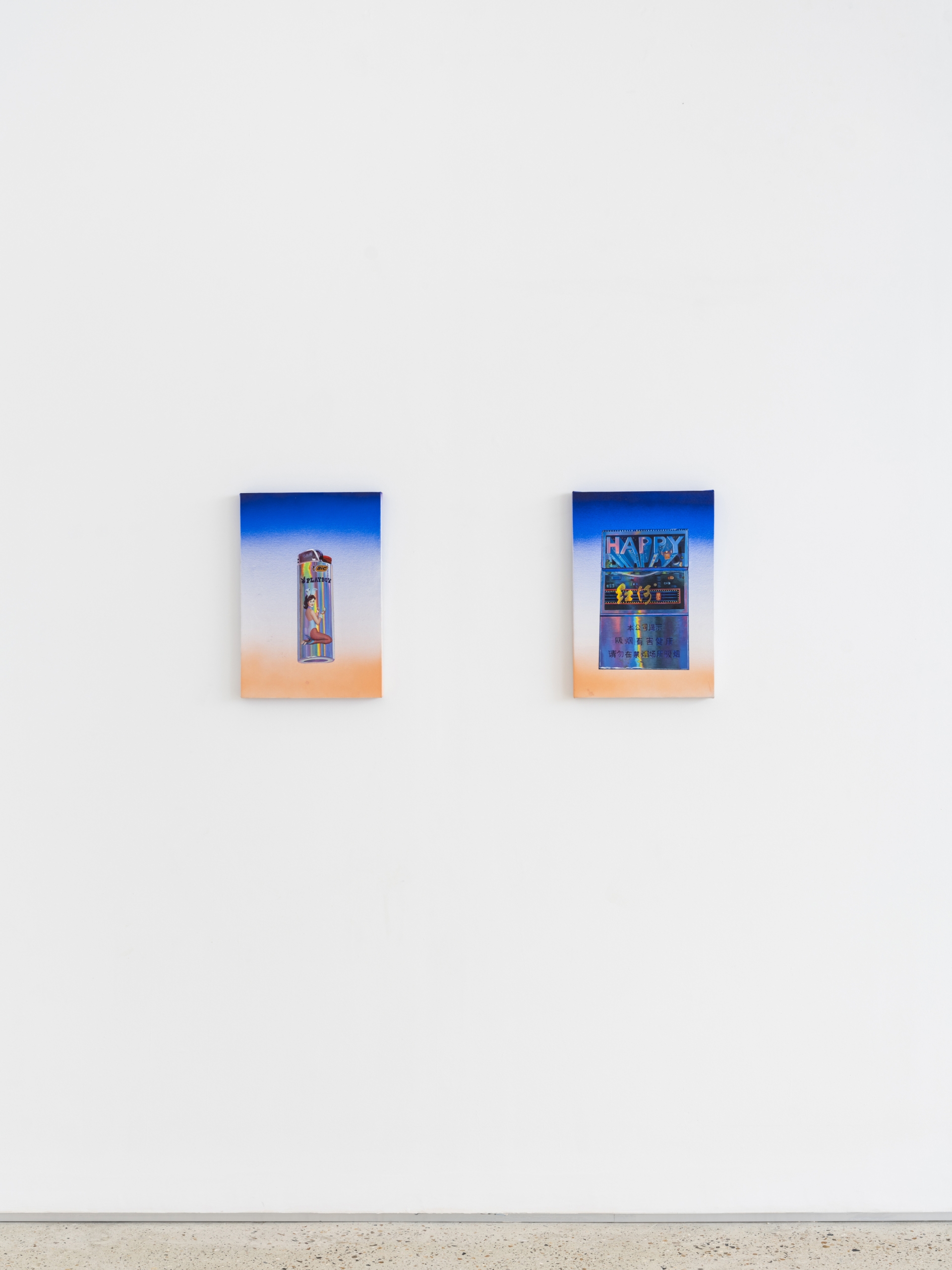
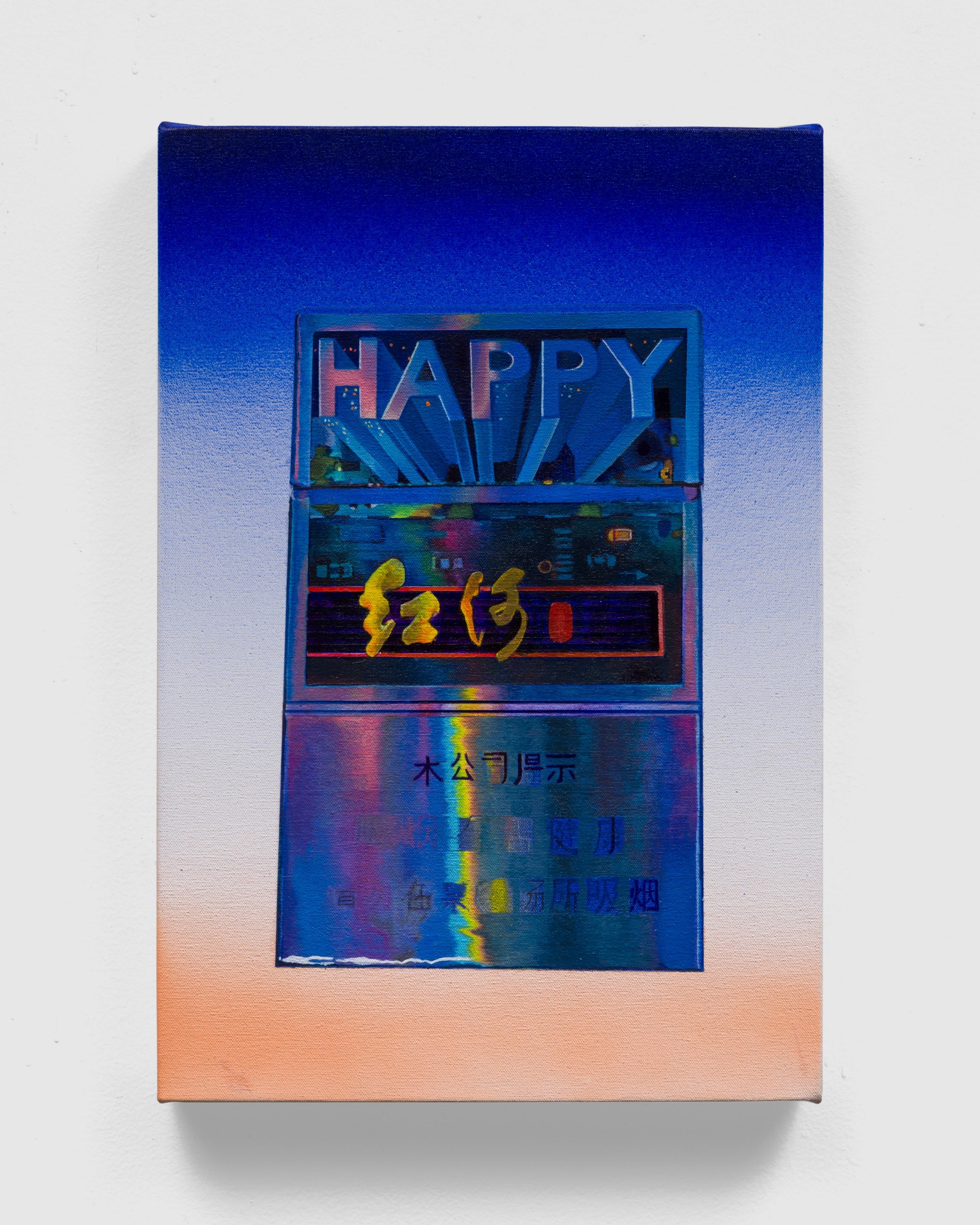
Jonny Negron, Happiness is Easy, 2024, Acrylic on linen, 48.3 × 33 cm. Courtesy of the artist, Château Shatto and Crèvecœur, Paris.
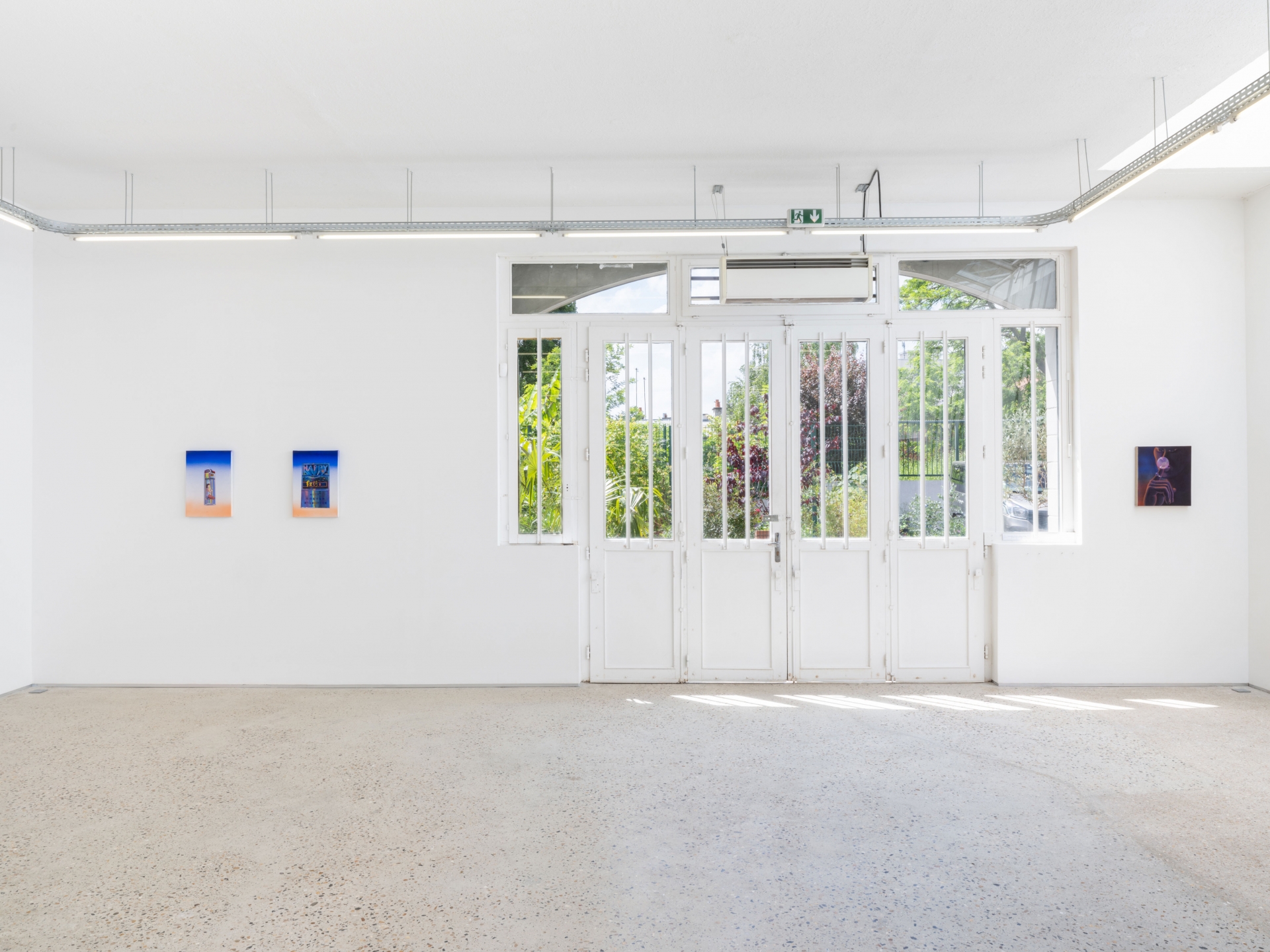

Jonny Negron, The Sound of Silence, 2024, Acrylic on linen, 43.2 × 38.1 cm. Courtesy of the artist, Château Shatto and Crèvecœur, Paris.
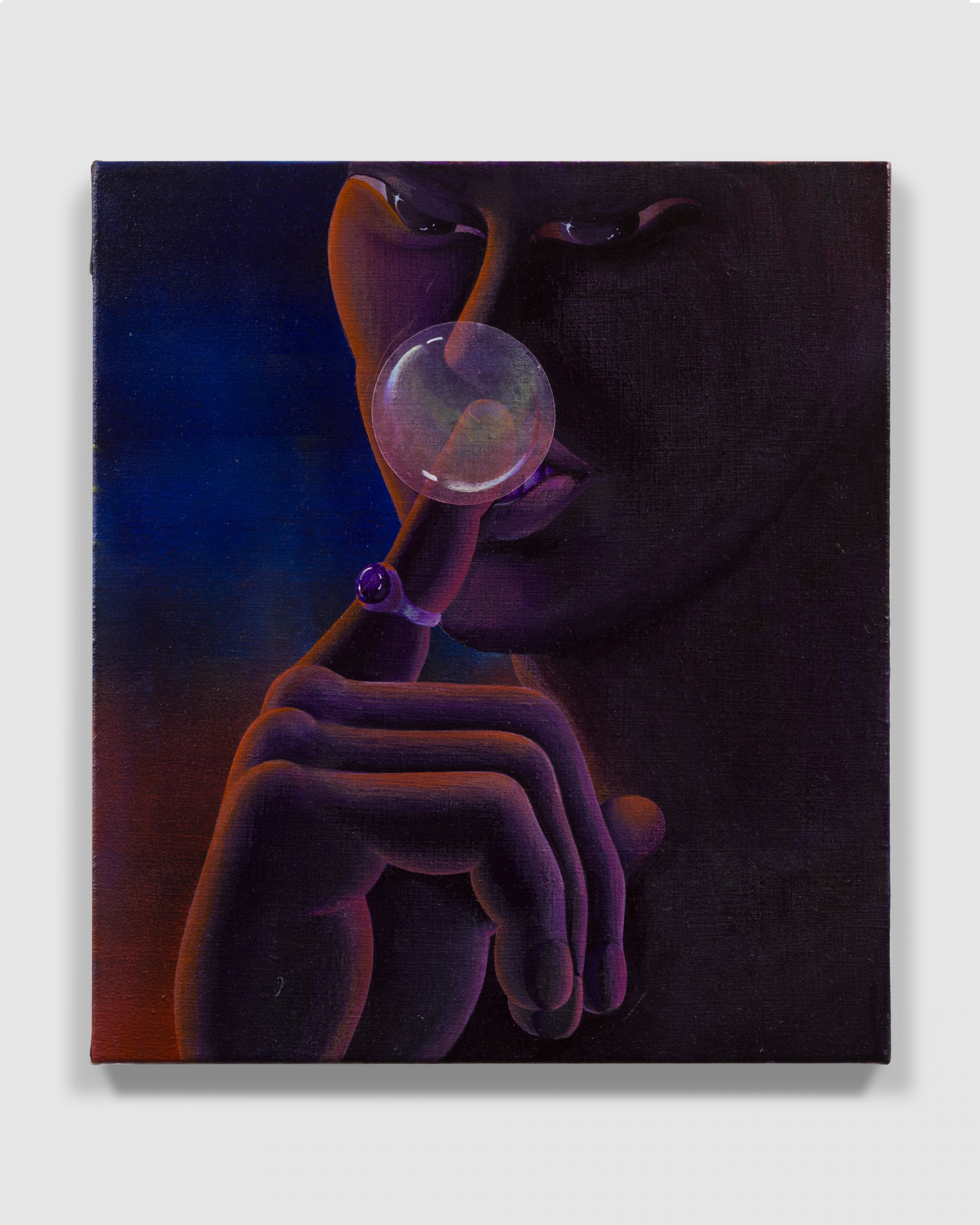
Jonny Negron, The Sound of Silence, 2024, Acrylic on linen, 43.2 × 38.1 cm.
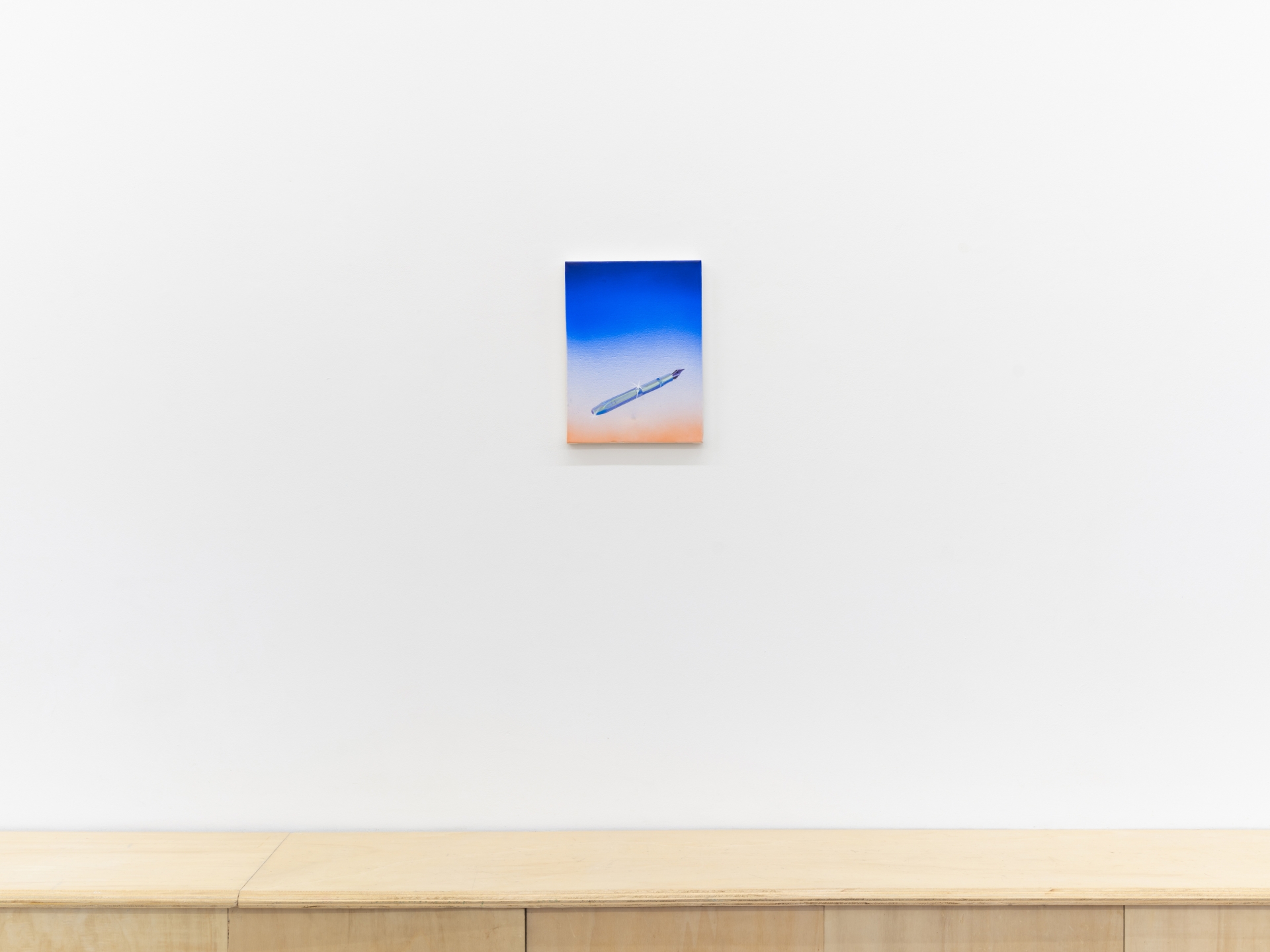
Jonny Negron, Poet, 2024, Acrylic on linen, 30.5 × 22.9 cm. Courtesy of the artist, Château Shatto and Crèvecœur, Paris.
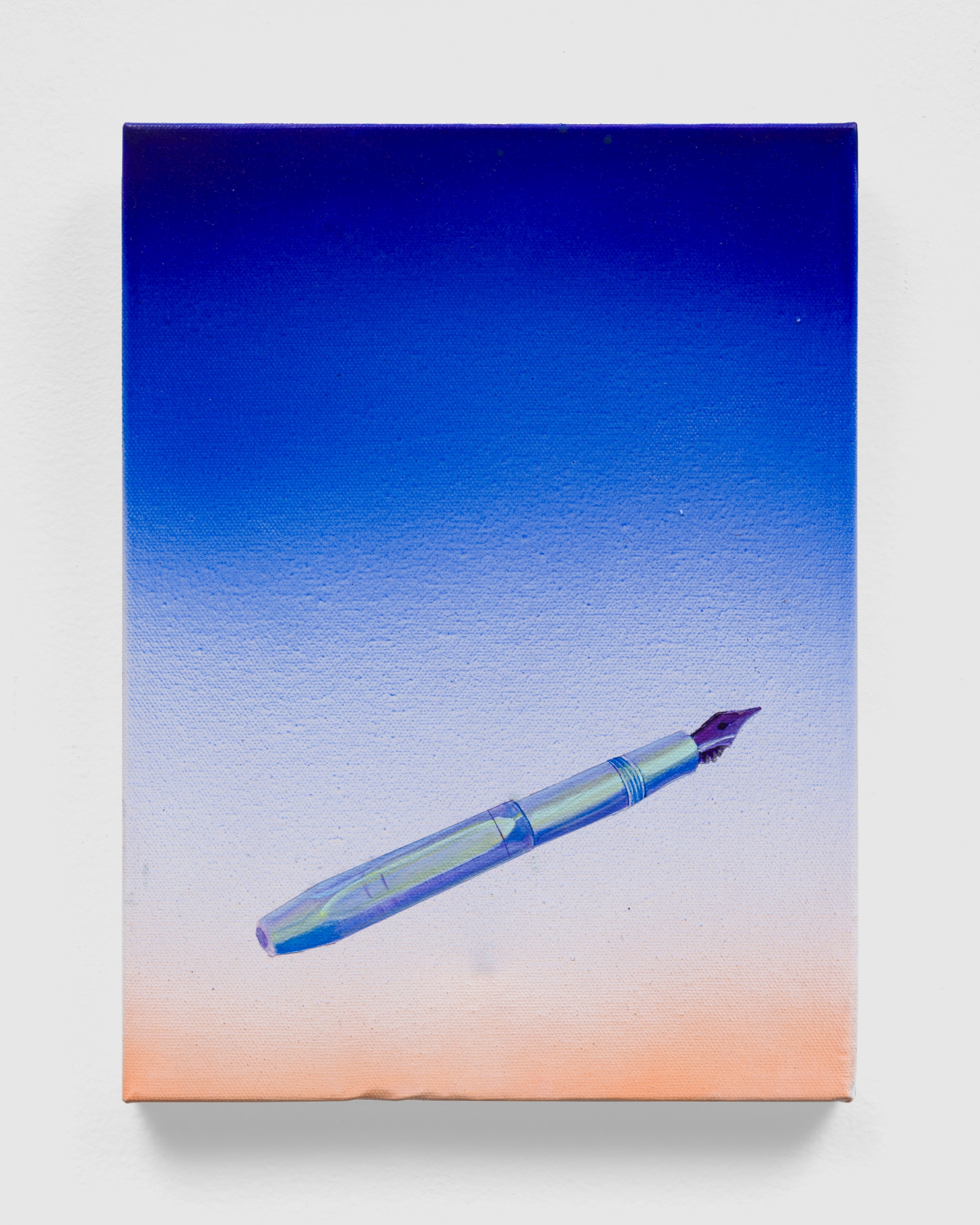
Jonny Negron, Poet, 2024, Acrylic on linen, 30.5 × 22.9 cm (detail).
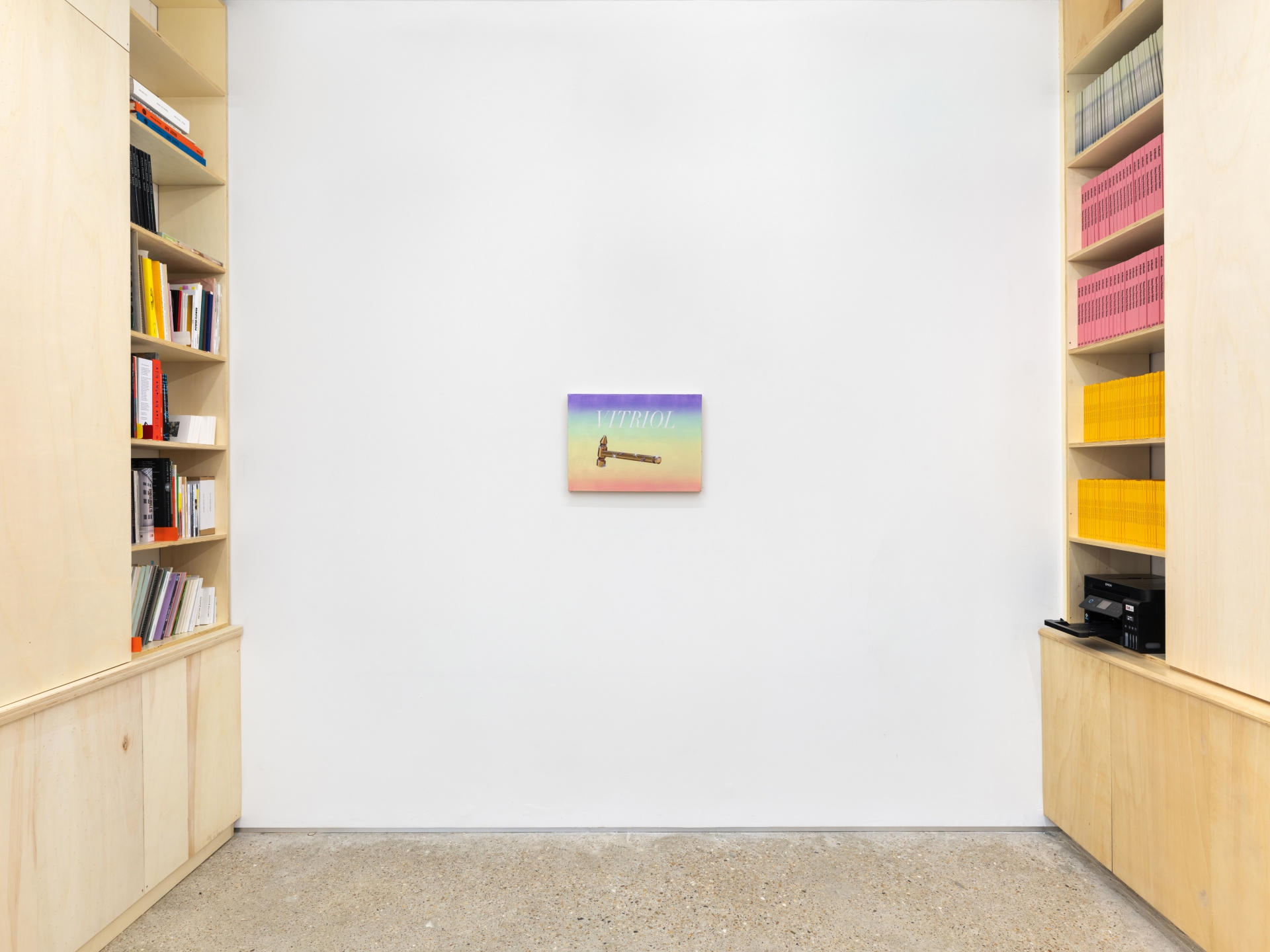
Jonny Negron, She hears The Clock and It Strikes Like a Hammer, 2024, Acrylic on linen, 40.6 × 55.9 cm. Courtesy of the artist, Château Shatto and Crèvecœur, Paris.
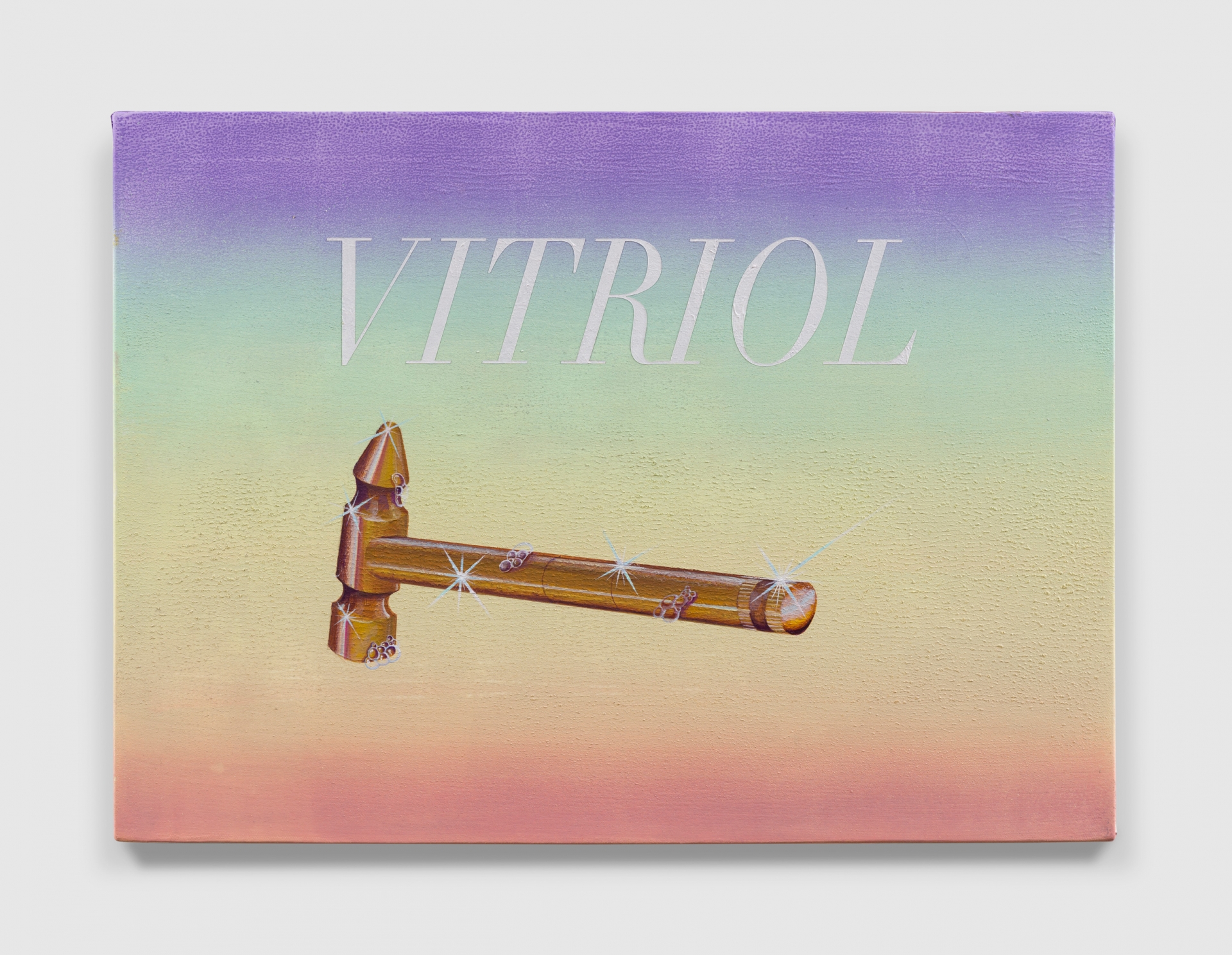
Jonny Negron, She hears The Clock and It Strikes Like a Hammer, 2024, Acrylic on linen, 40.6 × 55.9 cm.
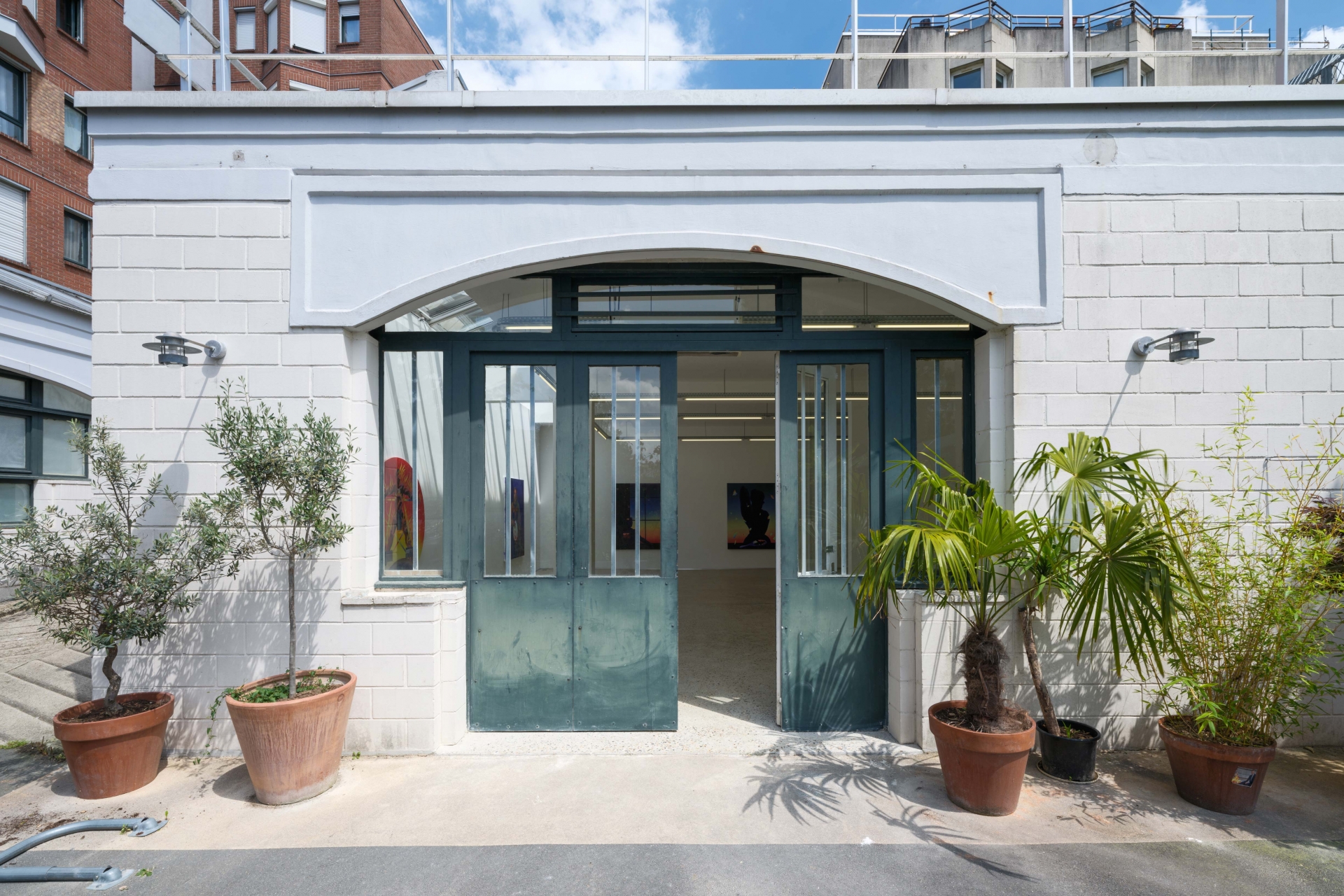
Work views: Ed Mumford
Exhibition views: Martin Argyroglo
PARIS — Cascades
9 rue des Cascades
75 020 Paris – France
from Tue. to Fri.: 10 a.m. to 6 p.m.
Sat.: 11 a.m. to 7 p.m.
and by appointment
PARIS — Beaune
5 & 7 rue de Beaune
75 007 Paris – France
from Tue. to Fri.: 10 a.m. to 6 p.m.
Sat.: 11 a.m. to 7 p.m.
and by appointment
Contact
PARIS — CASCADES: +33 (0)9 54 57 31 26
PARIS — BEAUNE: +33 (0)9 62 64 38 84
info@galeriecrevecoeur.com